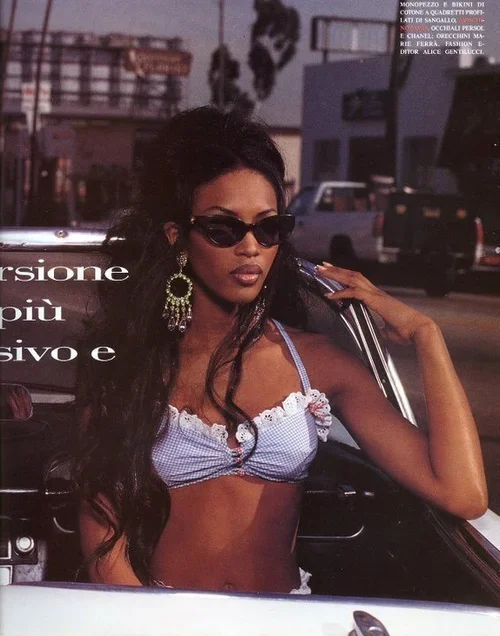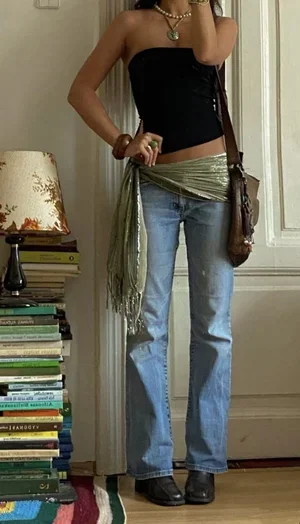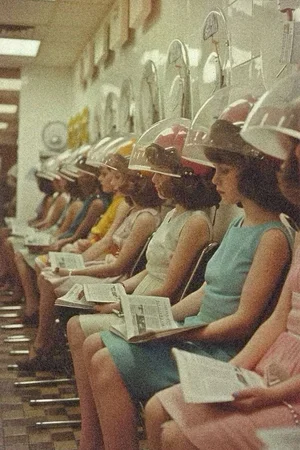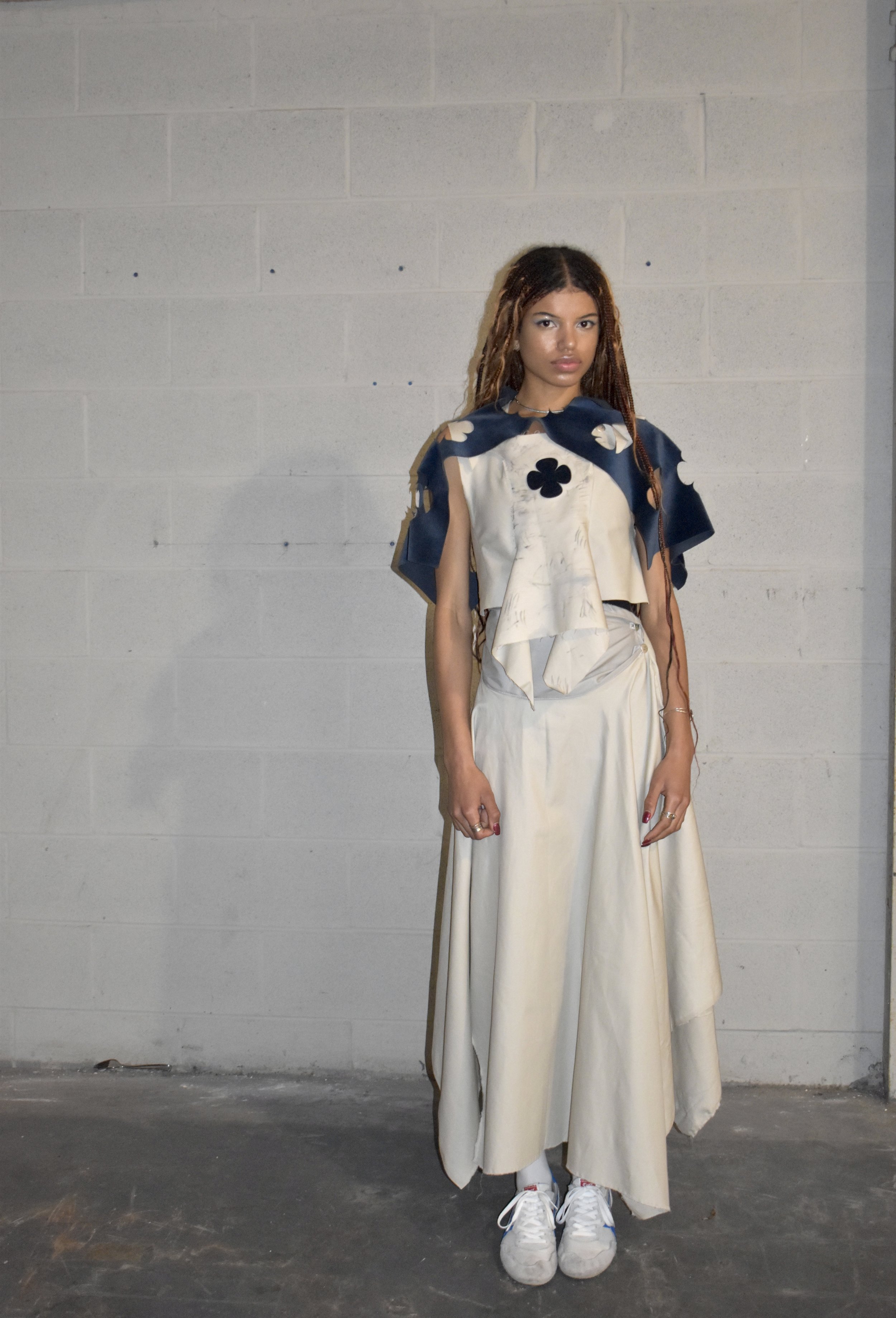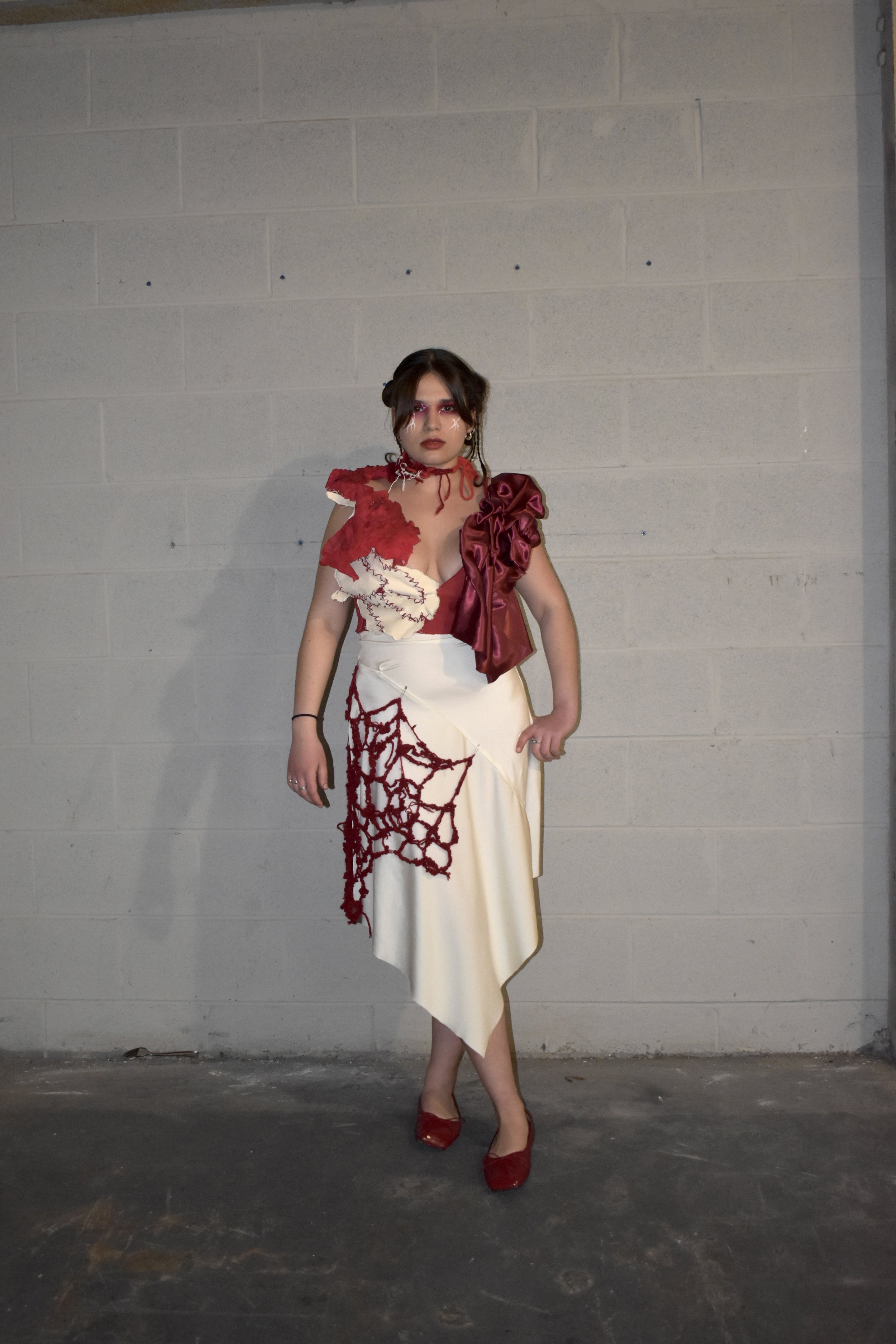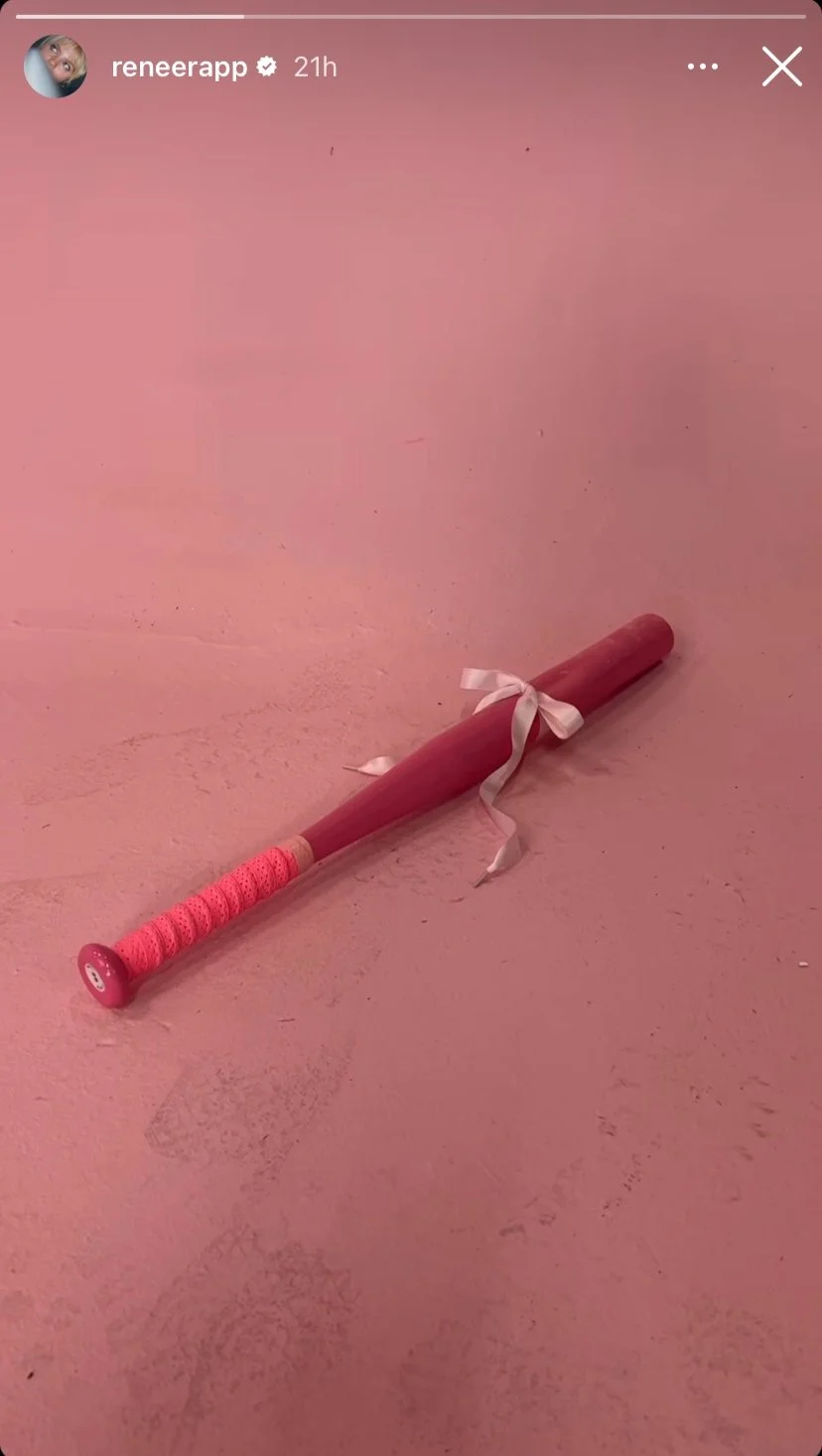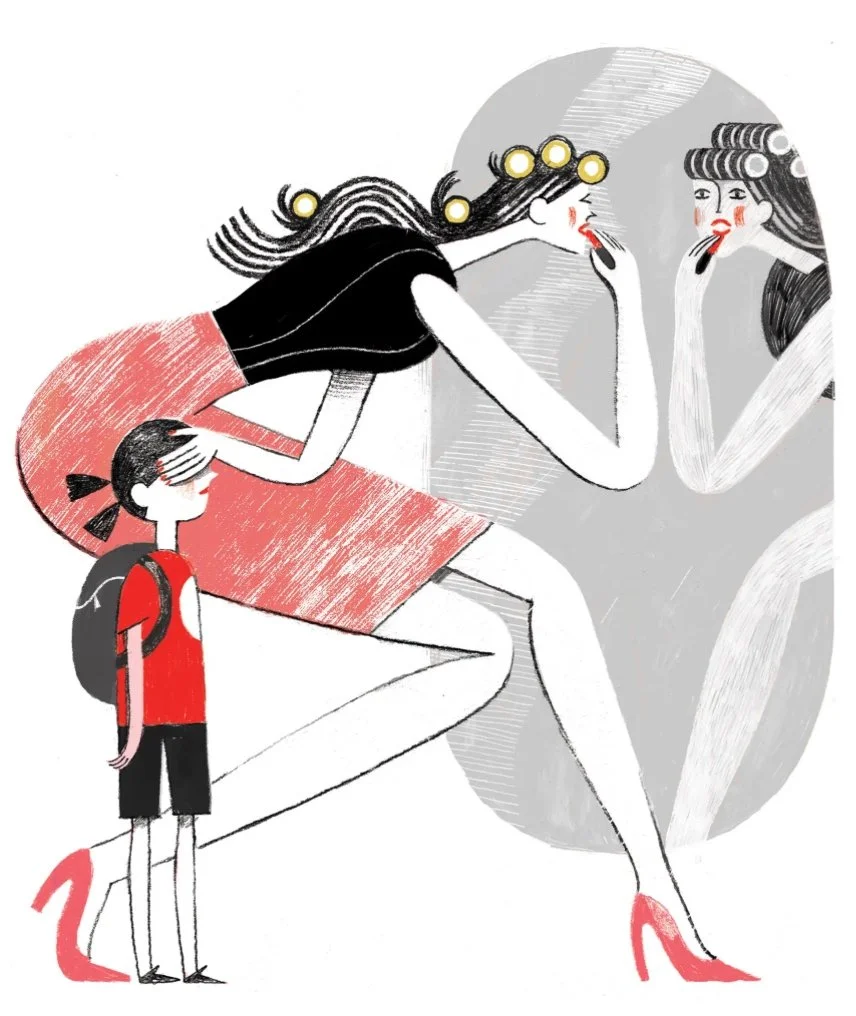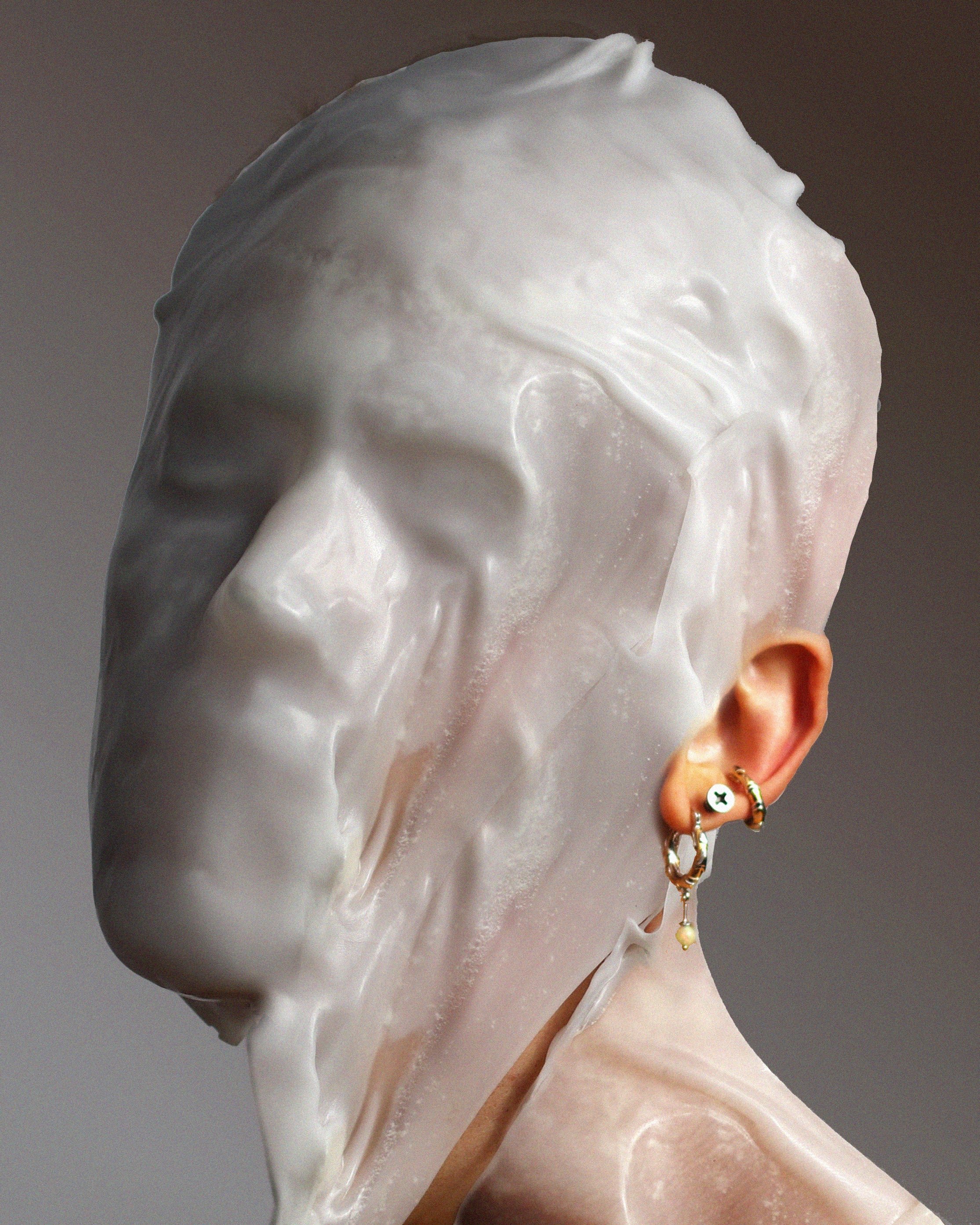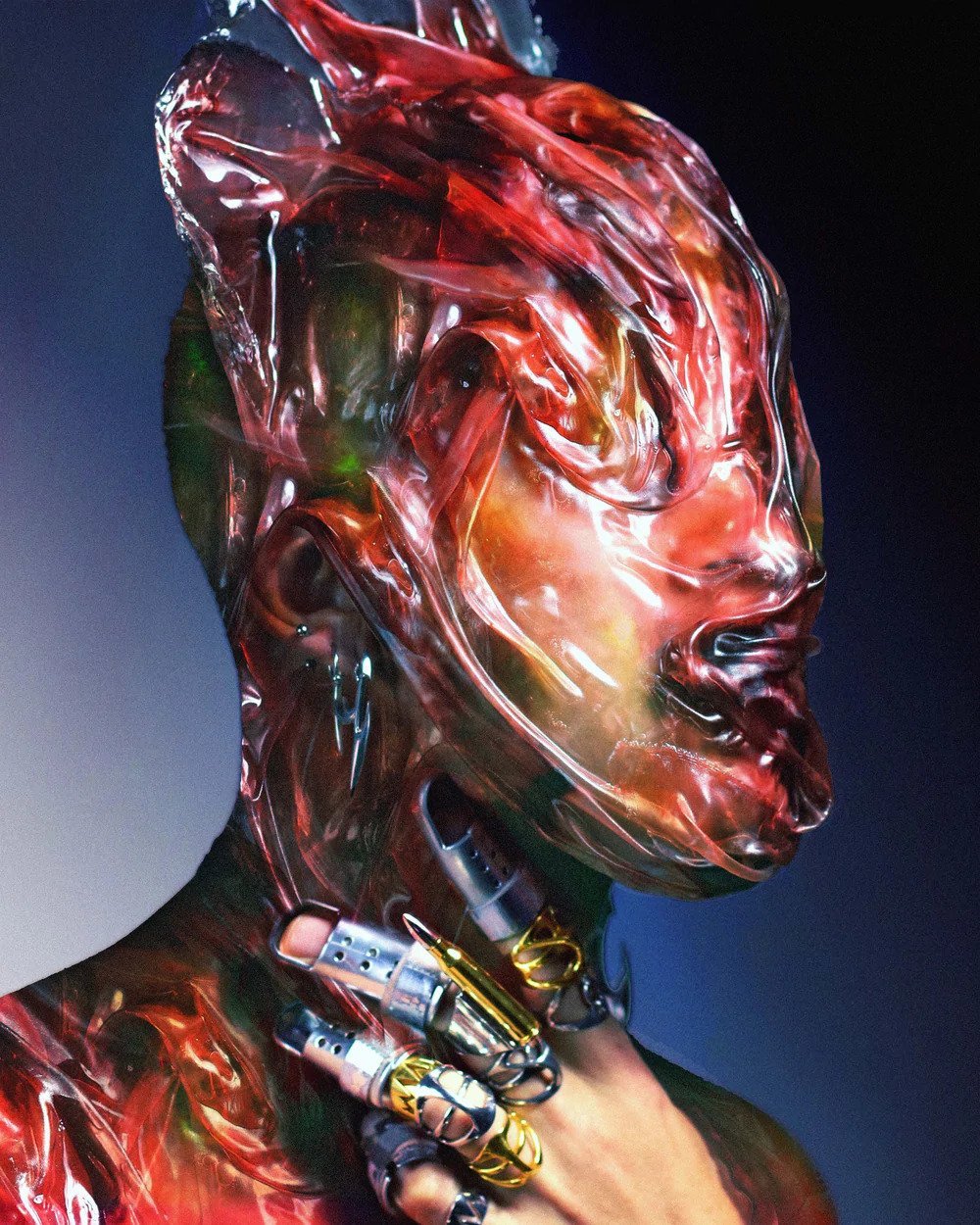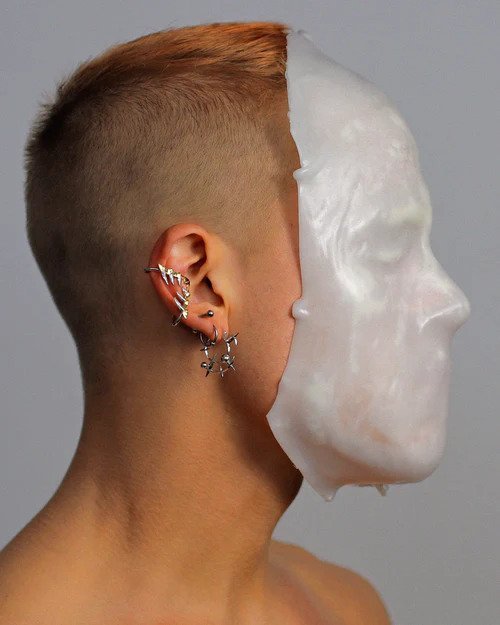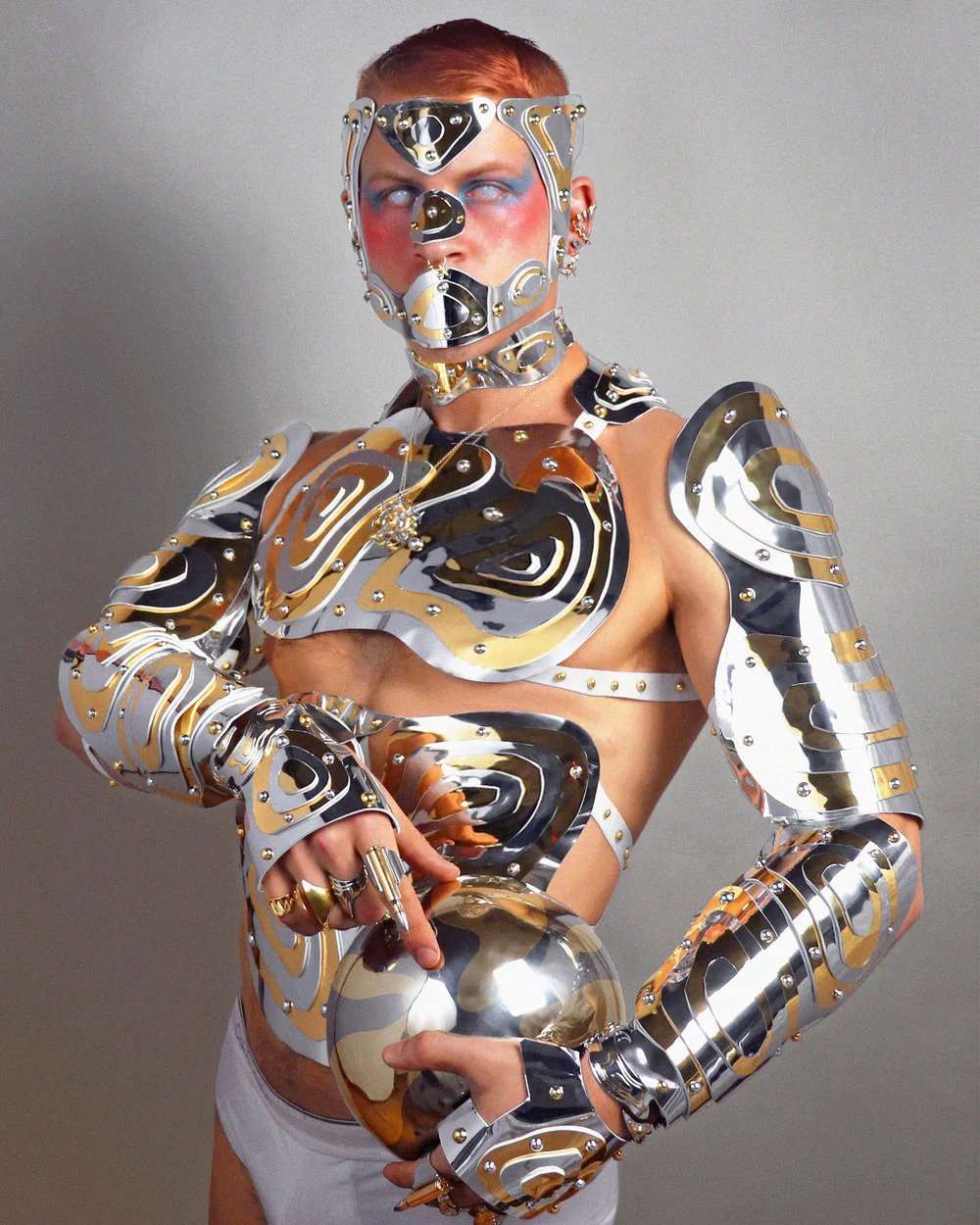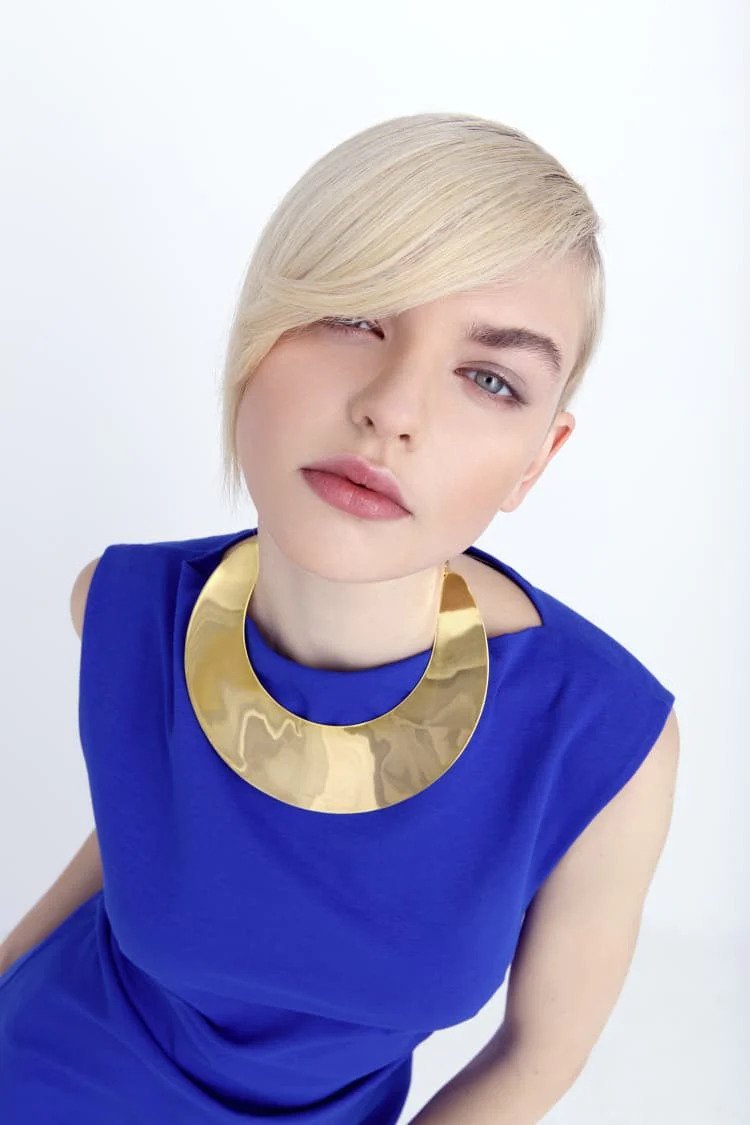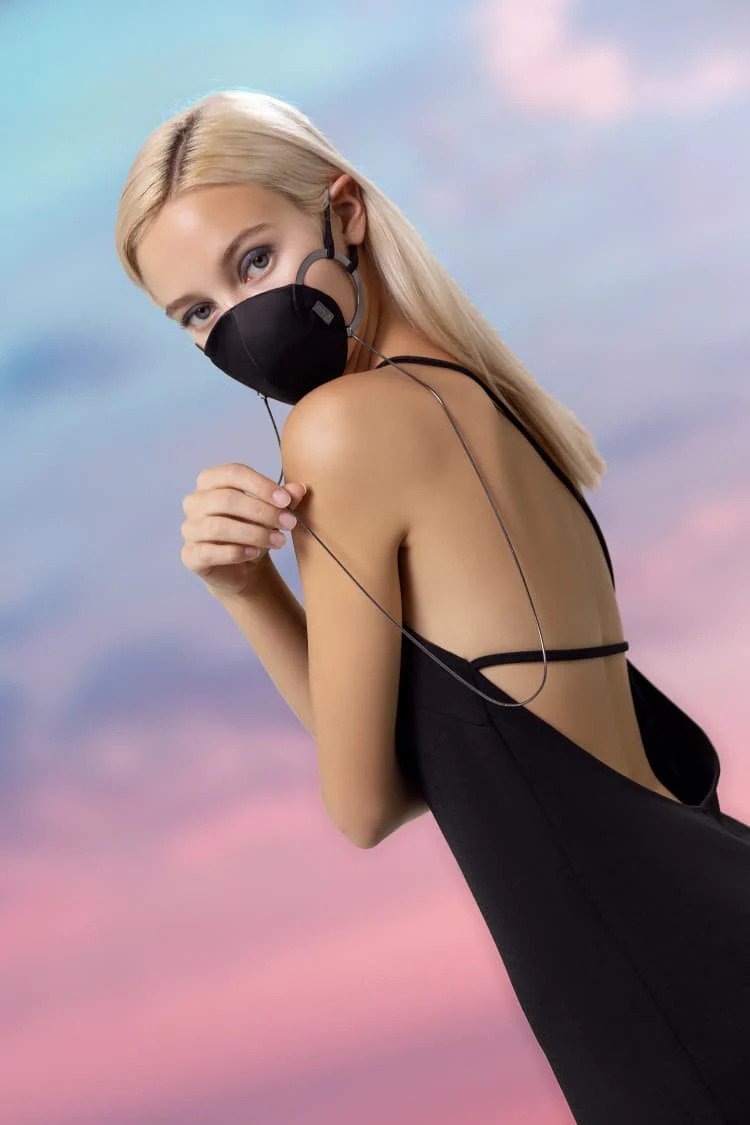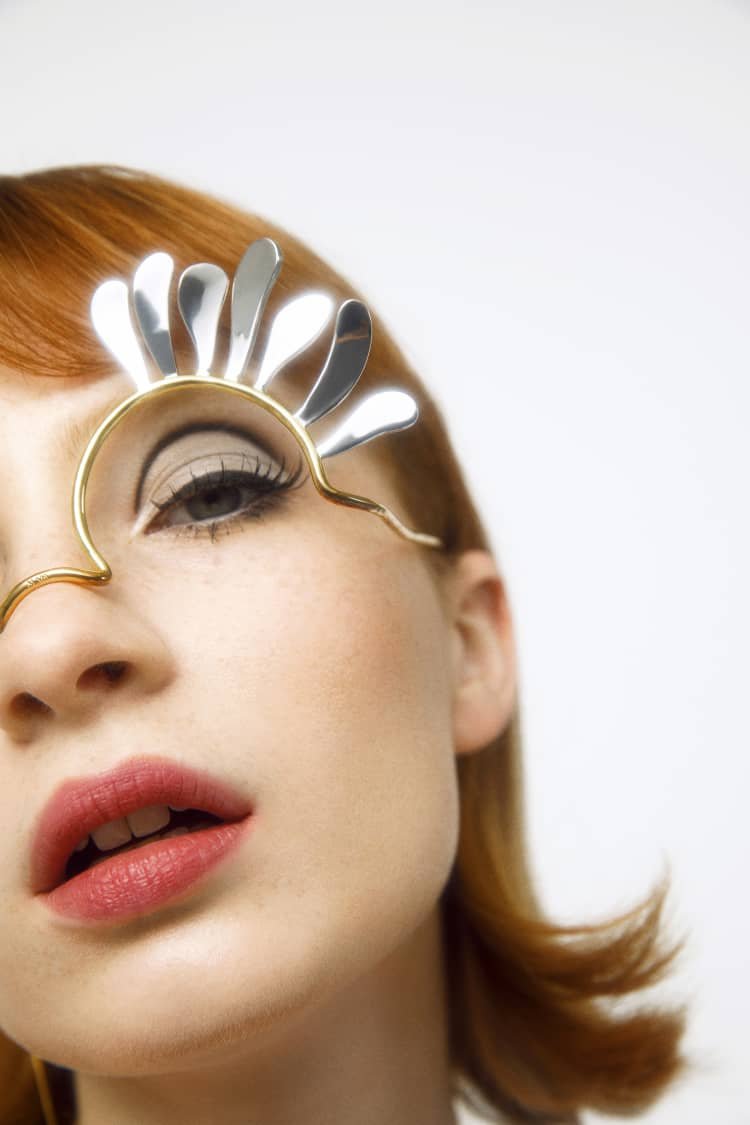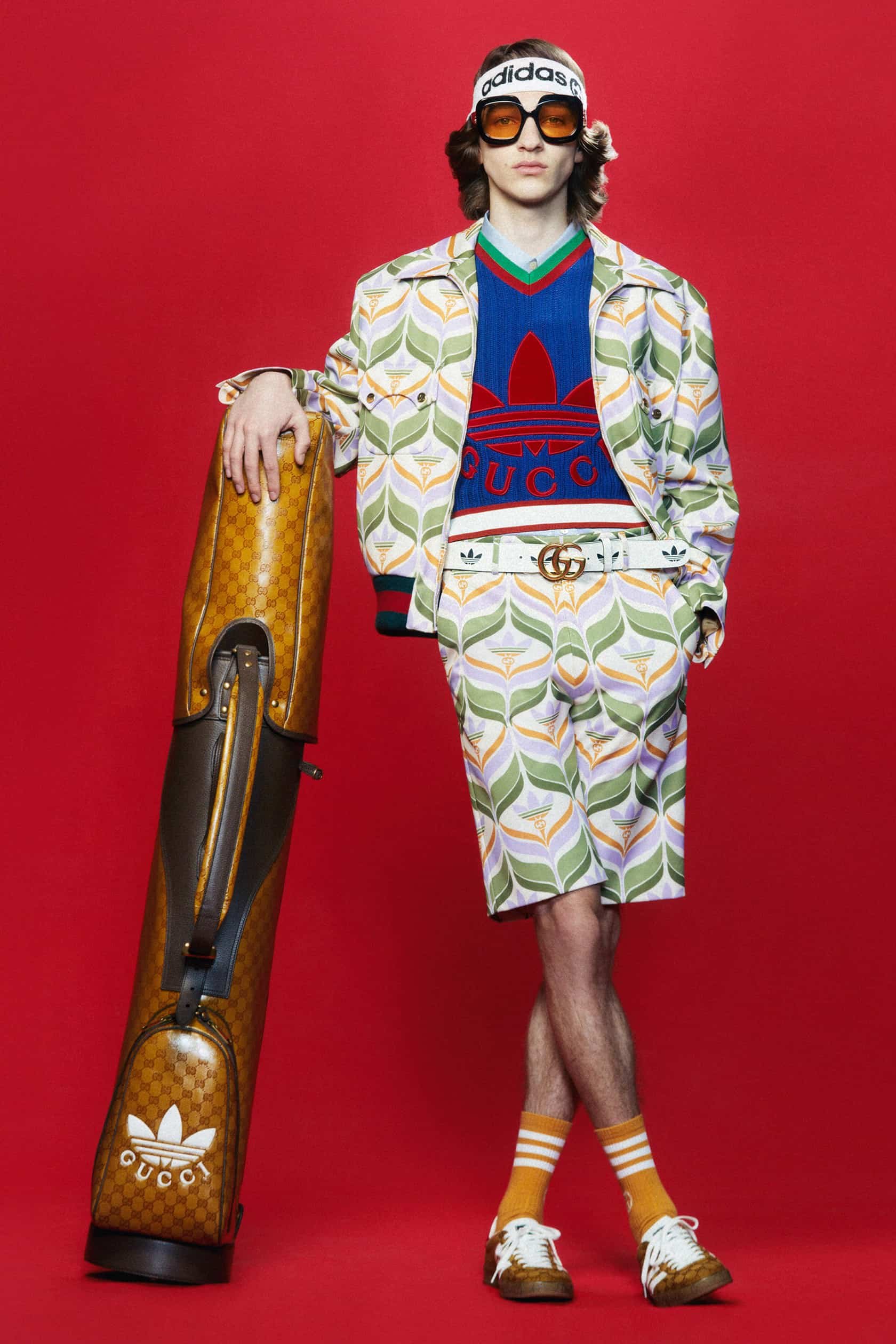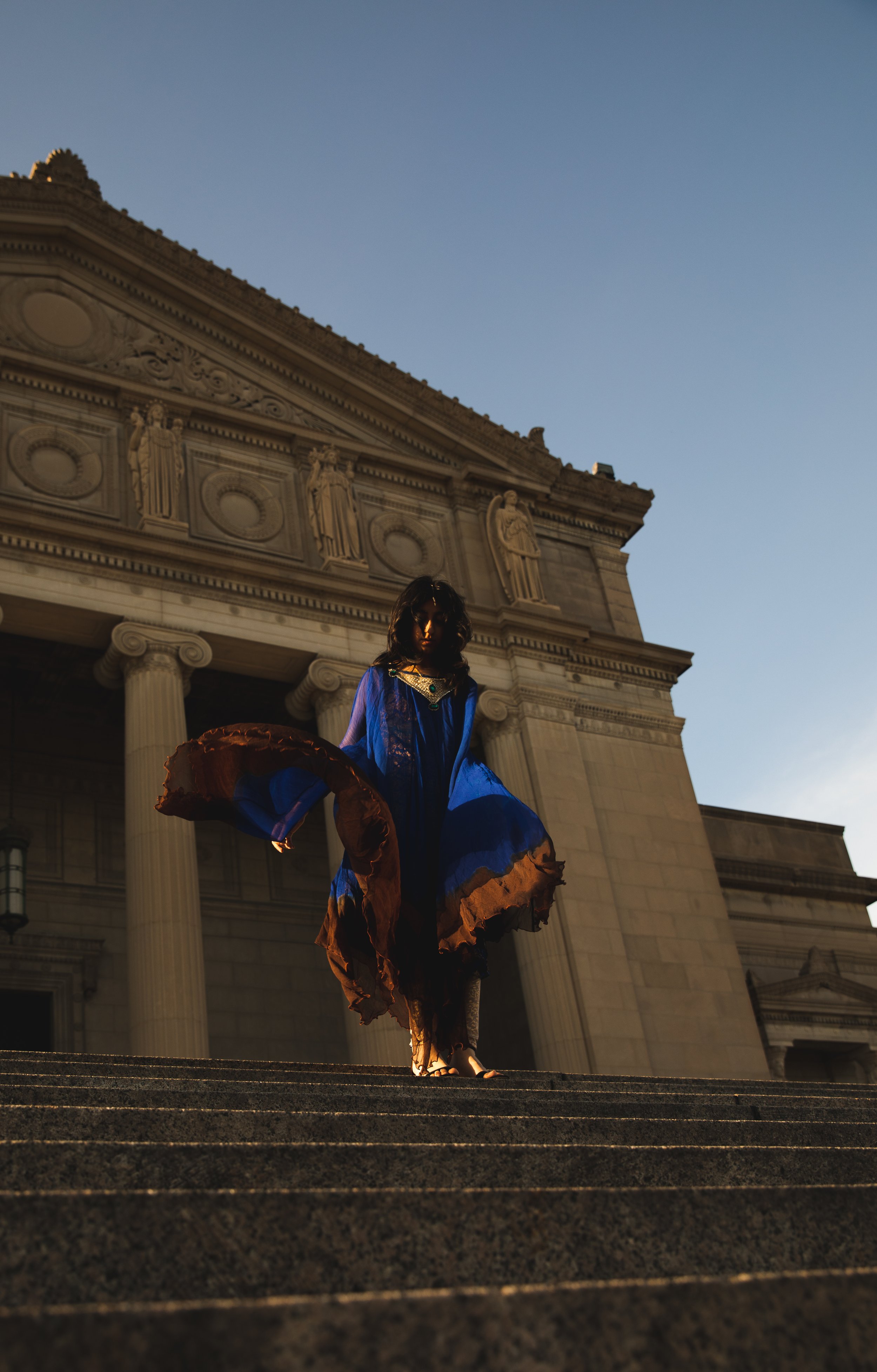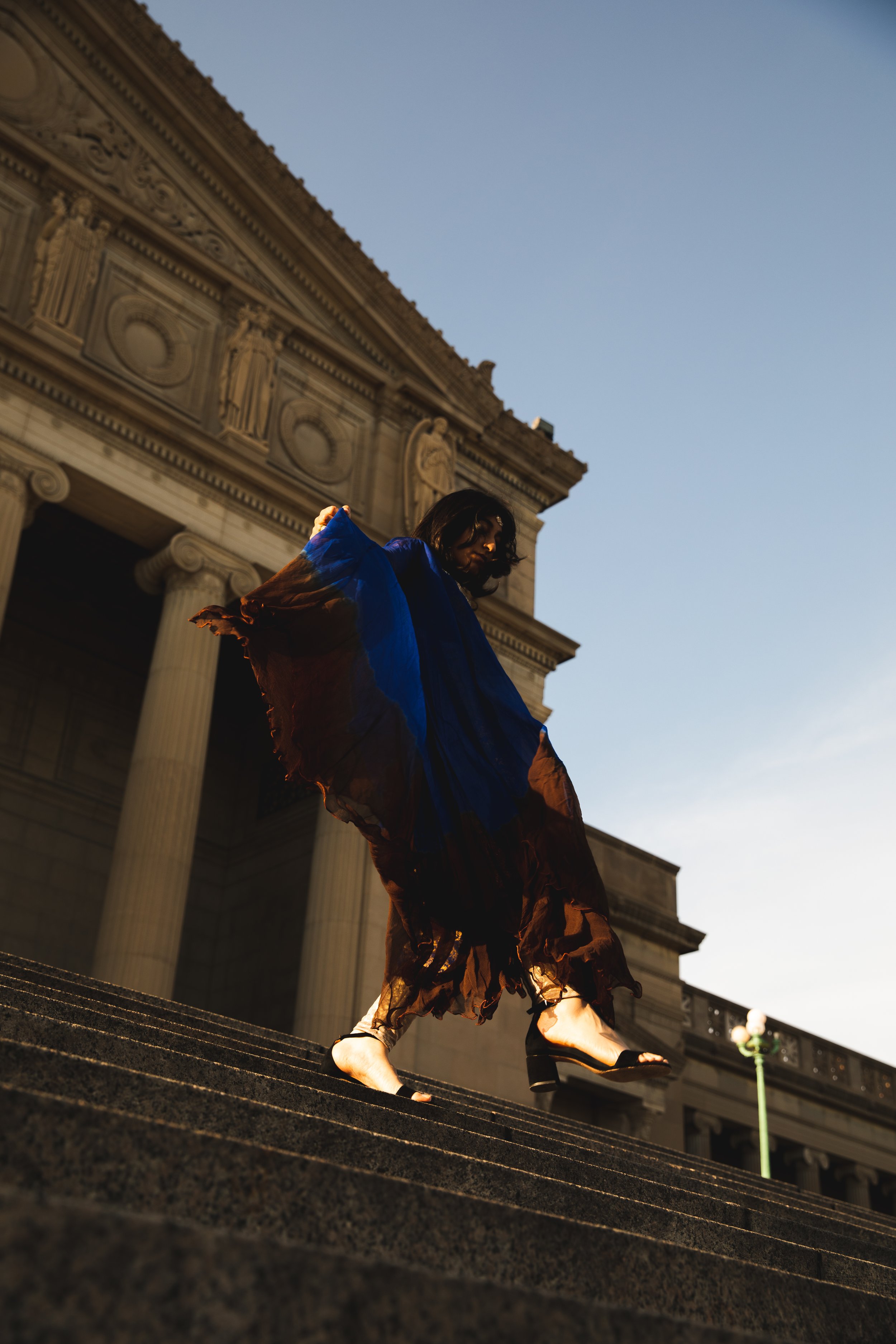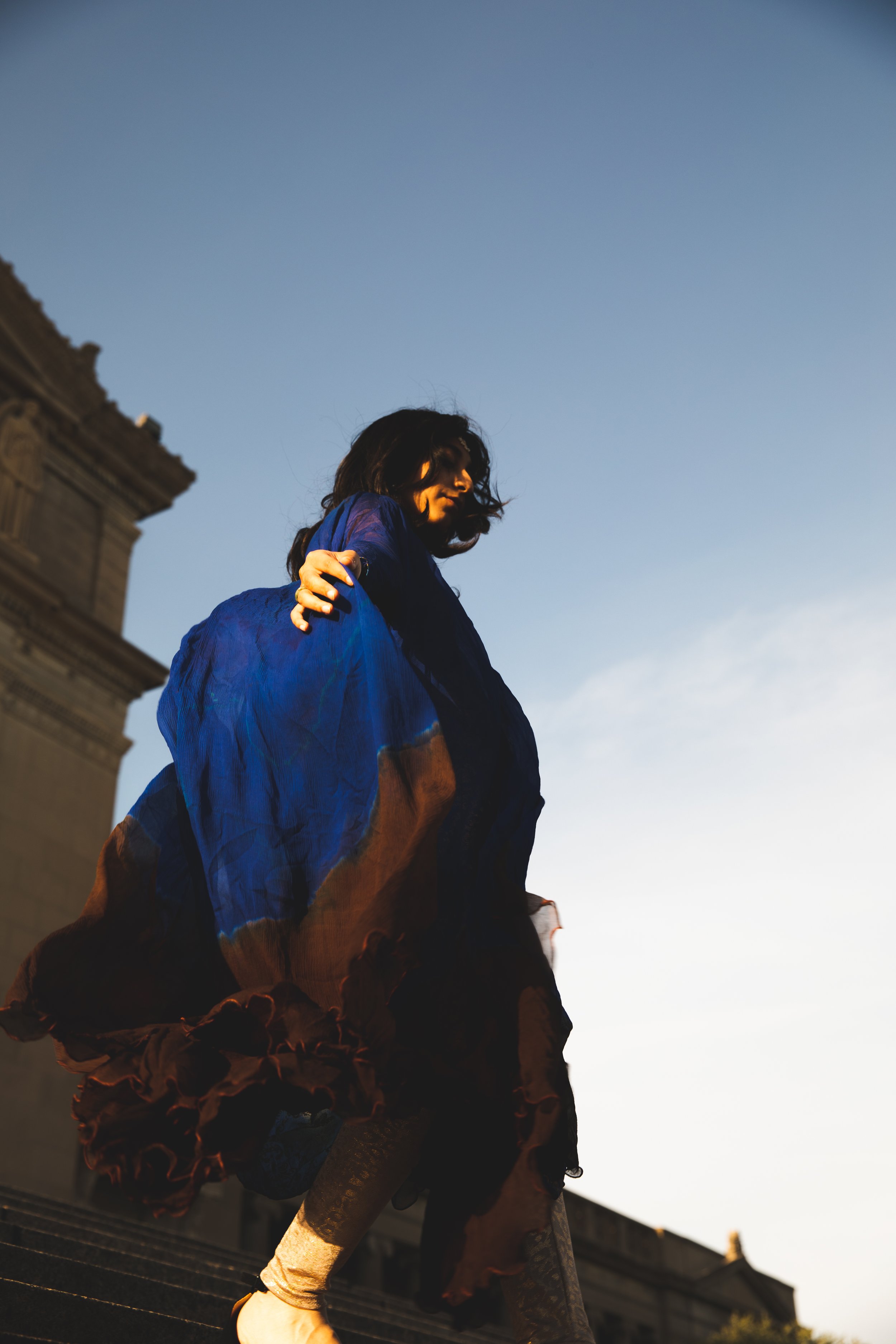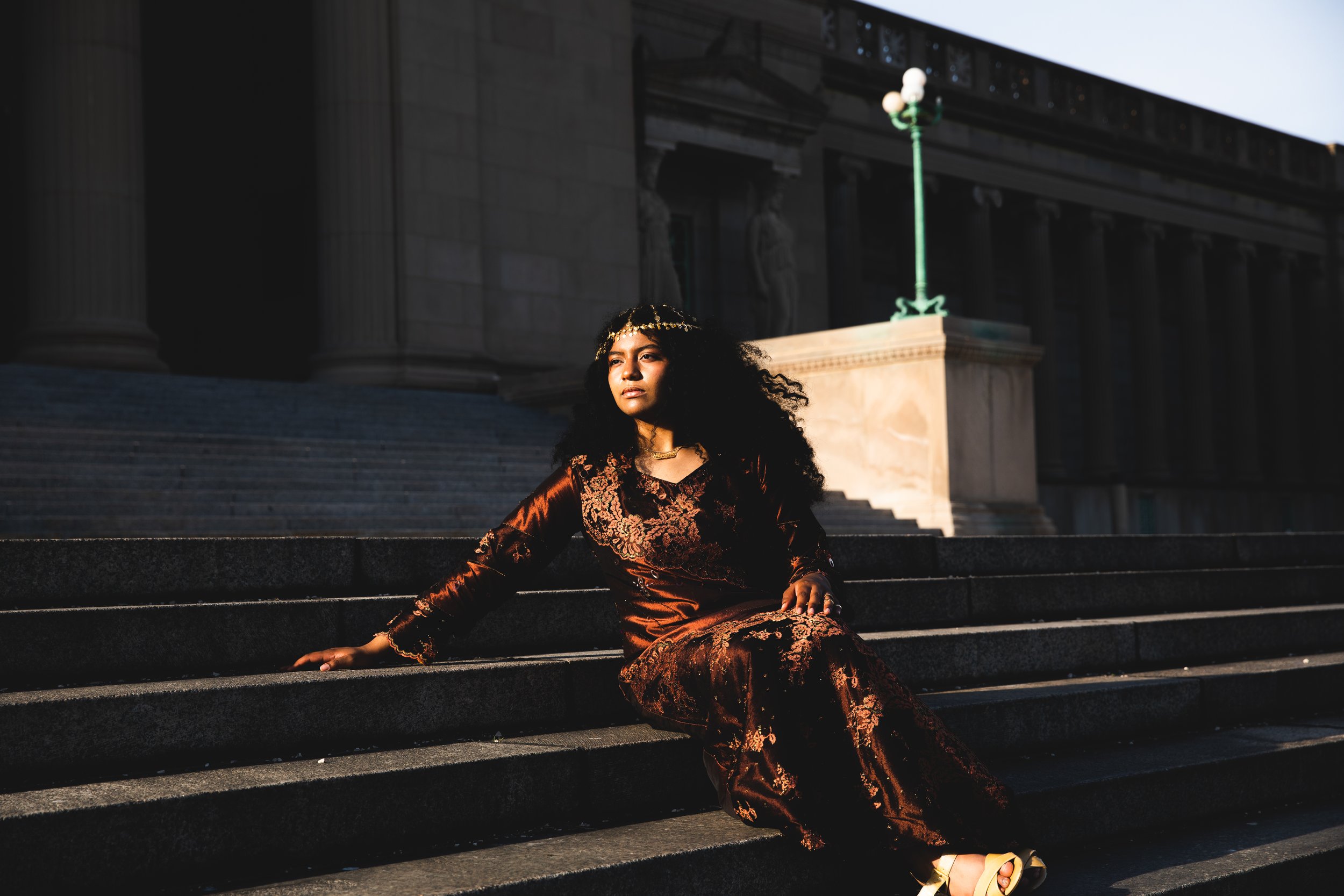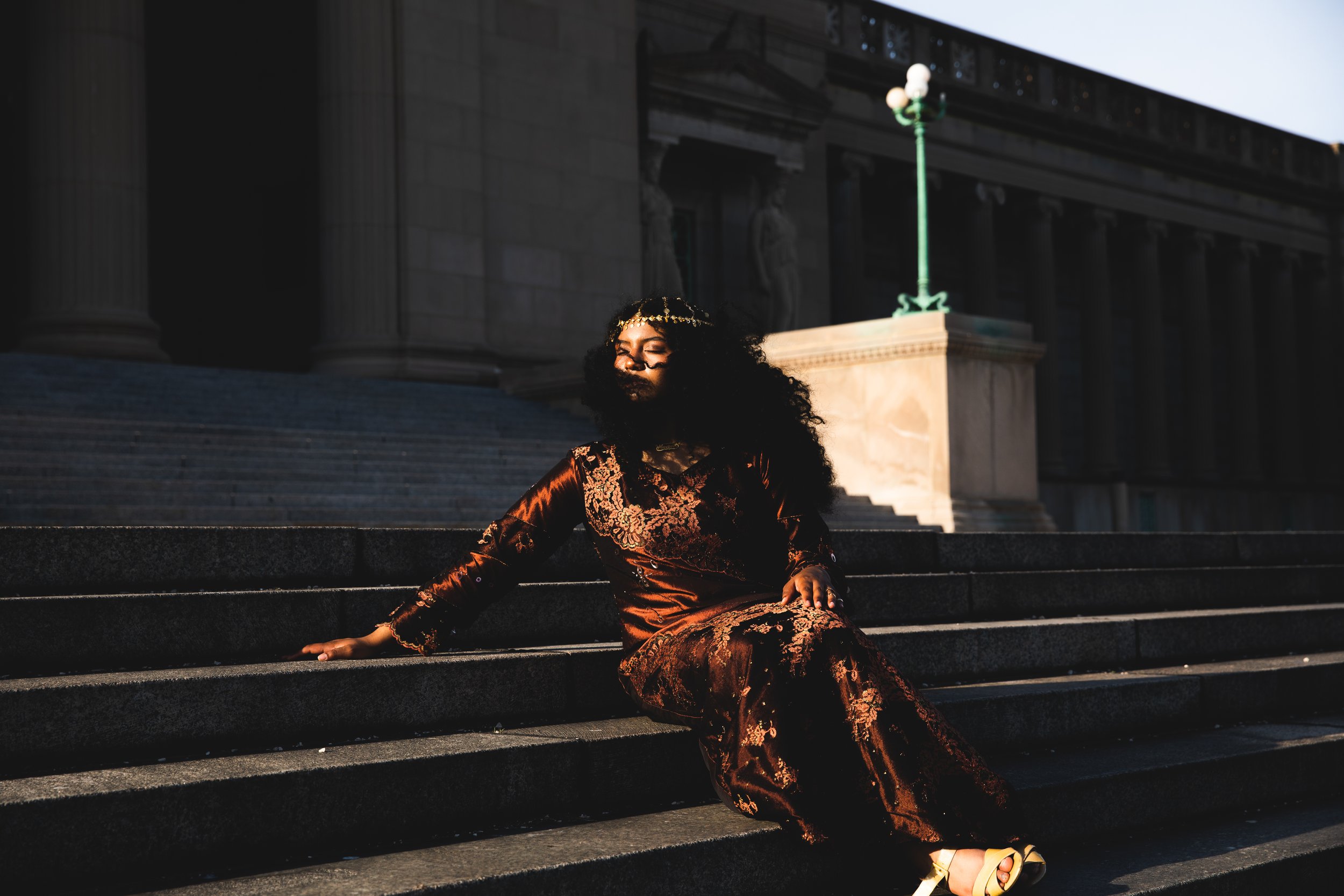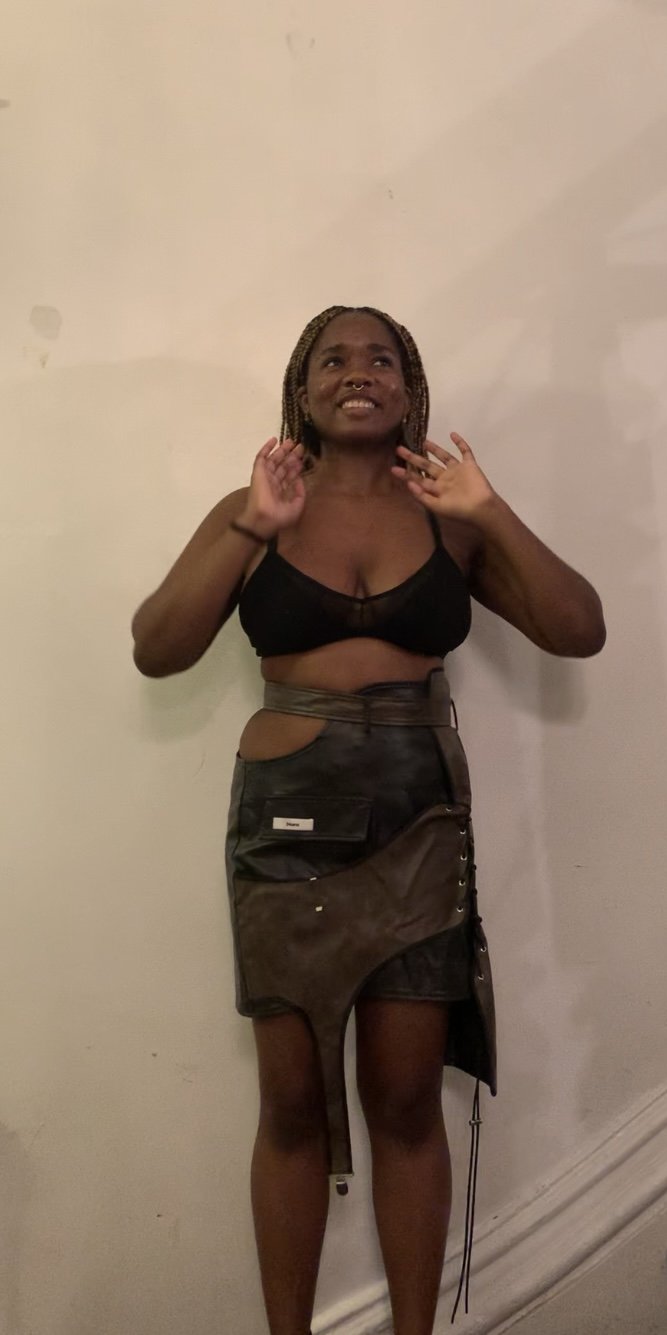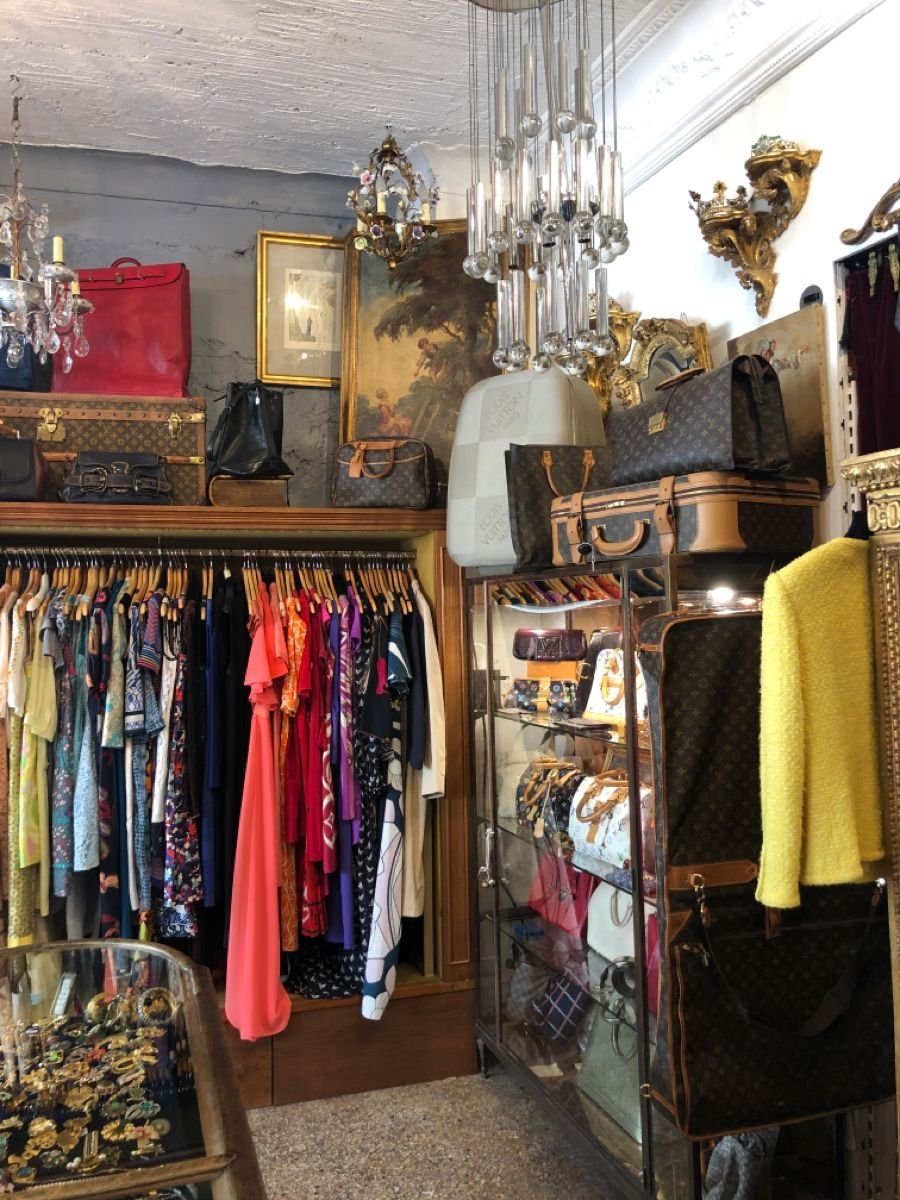Once, supermodels ruled the fashion industry—faces like Naomi Campbell and Cindy Crawford weren’t just runway stars, they were global icons. But today, their reign has faded, replaced by celebrities and influencers. So, what happened? And more importantly, can the supermodel make a comeback in the digital age? Exploring the rise, fall, and potential rebirth of fashion’s most iconic figures, this article delves into what it will take to bring back the era of the supermodel.
Read MoreThe Science Behind Three Powerhouse Pieces
Accessories, think jewelry, belts, and scarves, often play the part of last-minute outfit additions, a source of some extra eye-catching color or dimension.
This limited role inhibits their incredible ability to entirely transform an outfit (the “make” part of make or break, if you will). For most of us, capsule pieces are the go-to in busy mornings (which, let’s face it, are most), but over time the basic, simple outfit obstructs us from feeling connected to our clothes and feeling put together.
The solution: powerhouse accessories. By learning a couple of go-to rules, you’ll be able to grab a statement jewelry, silk scarf, or belt on your way out the door and achieve the “goal” of your outfit - whether it's to make a good first impression or just showcase your personal style.
The Statement Necklace
Statement necklaces are powerful, allowing you to turn a simple outfit into an elegant or even down-to-earth ensemble. However, it needs its spotlight to make its statement. Think of the statement necklace and the neckline of your top as two pieces of a puzzle - essentially, they need to “fit.” A good rule of thumb is for the necklace to lie above the neckline. However, if it is on the longer side or has a pendant, it can fall over the top, but should take up a prominent amount of space to ensure the neatness of the outfit. In general, choose a complementary neckline if you’re planning on necklace statementing.
If you really want that professionally-put together outfit look, think about the size of the necklace in relation to the outfit. A statement piece doesn’t need to be big or flashy, but rather prominent in itself. If your outfit itself is a bit on the boxier or looser side, opting for thinner, smaller jewelry will allow for your outfit to be most cohesive.
That’s not to say that the outfit and necklace should be opposite in every regard. In fact, the most important thing here: the goal of the necklace needs to match the goal of the outfit. If your clothing is starting to achieve a goal, let’s say professional elegance, the statement necklace needs to finish it.
The Silk Scarf
A highly underrated spring, summer, and even fall staple, the silk scarf is the quickest way to uplevel any outfit in a unique, eye-catching, and most importantly, understated, way. The rules are simple: the scarf should add a pop of distinct color - like the statement necklace, it too requires the spotlight. Think black on black outfit with a light blue silk around the neck - what could be more versatile yet commemorable?
However, the headband look can rival the classic around-the-neck placement, especially on those slow summer days. If you don’t feel like your top is the best canvas for a silk-scarf, the headband style is a great way to add that bit of elegance.
The Belt
For most, the belt’s purpose is functional, but it too actually falls under the category of the one-second outfit-defining accessories. For the classic leather belt, all’s fair so long as the color of the belt contrasts against the color of the pants.
Classic isn’t the only way to go, though. Taking a little bit of time to find a waist-accentuating piece with a unique color or texture could become a staple in your toolbox of outfit-curating pieces. Take the metal belt - it’s almost an outfit in itself. Over a solid, simple outfit, the metal belt is a simple, eye-turning source of color and style.
Nara Smith and the Return to Conservatism
Although many were shocked and disappointed by the election of Donald J. Trump to be the 47th President of The United States, this win might’ve been written on the walls— the walls of TikTok that is.
As TikTok begins to further influence the cultural zeitgeist, the mapping of fashion and wellness from the years before the election could have signaled trouble for the democratic campaign much earlier than November 5th.
The arguably most popular TikTok trend of this year has been the fashion and lifestyle of tradwives (short for traditional wives), popularized mostly by model and homemaker, Nara Smith.
When Nara Smith– and by extension, her husband Lucky Blue Smith– entered the TikTok sphere, many including myself were enamored by the simultaneous glitz and down to earth quality she portrayed in her videos, most of them in which she makes food “from scratch” for her children and husband while donning thousand dollar gowns and accessories. But after the shocking results of the 2024 election and somewhat less shocking but equally concerning exit poll data, I fear that political analysts and the general population alike, while absorbed in the mania that was Kamala HQ and Brat summer, ignored a key factor in predicting how young people, specifically Gen Z, would vote: the rising popularity of Nara Smith, traditionalist fashion trends, and therefore the rising popularity of conservative values.
On the surface, there is nothing wrong with the slick backs, Ralph Lauren sweaters, and little lady jackets that have resurfaced in the closets of young people in America. What is concerning, however, are the hyper feminine ideals that hide in the pockets and zip closures of this type of dress.
In a TikTok from Elysia Berman, she says, “These hyper- feminine ideals— a lot of it is about conformity.” Berman also comments on the loss of individuality when it comes to self expression through personal style, calling it “an act of resistance” to simply exist in a context that favors the traditional image of what a woman is and how she should present herself in the world.
Within the style microtrends “coquette,” “old money,” and “quiet luxury,” there is a story that wants to be told, and the same goes for general trends seen in magazines and runway shows. It is up to the person wearing the clothes to say whether that story is one depicting resistance, one of personal evolution, or one that says you’re simply too exhausted to pick an outfit.
Looking at the face of this fashion “movement”, the only issue with Nara Smith’s content is the unrealistic “quiet luxury” lifestyle that she sells to unknowing viewers. It’s the facade of a perfect household in which housework and domestic labor don’t affect her, the children wait hours for a bowl of cereal, and her husband is simply happy to be there, but underneath this picture that she paints is the full belief in the values and structures stitched into the fabric of her Gucci gown. This is the very reason that fashion is, and has always been, political.
A deep dive into my design inspirations
Hi! I’m Melia, and I designed for the MODA: in Motion show. I’ll be taking you through my design process, specifically the stage of researching inspiration and implementing it.
My collection is centered around the aesthetics of late 1870s to early 1880s Western European women’s fashion. I didn’t make historical garments, but I took varying levels of inspiration from the silhouettes of this period for my three looks.
The Natural Form period began in the late 1870s and ended in the early 1880s, and I think the shapes of the costumes characteristic of the period are so delightful!
The Natural Form period is sandwiched between the first bustle era and the second bustle era. During both bustle eras, the popular silhouette involved an extremely exaggerated rump, which is not my cup of tea, but I adore the excessive trimmings that were popular throughout all of these periods.
The Natural Form period is sandwiched between the first bustle era and the second bustle era. During both bustle eras, the popular silhouette involved an extremely exaggerated rump, which is not my cup of tea, so I decided to emulate the Natural Form silhouette. In comparison to modern skirts, Natural Form skirts have a voluminous backside, but it is much more subtle than in the bustle eras.
Natural form skirts did not need to be supported by a bustle or any major structural undergarments, but they have a distinct shape that I love, so I made a skirt heavily inspired by Natural Form overskirts for my first look.
During the Natural Form period, women often wore cuirass bodices on top. They are figure-hugging, boned bodices that extend below the waist. The cuirass bodice is very structured and resembles armor, hence its name—a cuirass is a type of armor that covers the torso.
I think the cuirass bodice can stand as a symbol of a certain type of Victorian femininity. The cuirass bodice’s armor-like yet distinctly feminine appearance can signify feminine strength coexisting with rigid gender norms. It also conjures the image of a hard exoskeleton juxtaposed against a soft, hidden inside which makes me think of a Victorian woman’s veneer of politeness juxtaposed against her hidden inside world filled with ideas that we have no record of. The cuirass bodice is somewhat feminist because it extended below the waist so that its shape resembled a man’s bodice, and women could wear practical jackets instead of impractical capes, which had previously been the predominant outerwear option. I made a corset reminiscent of a cuirass bodice, and I used a silver satin so that it would somewhat resemble the metal of a real cuirass. I tried to draft the corset pattern according to methods described in 1880s patterning books, but I gave up after two failed attempts. I tried to point to the oppressive, stiff expectations of the period by mixing the structured historical garments with flowy, barely-there modern garments made of loose, sheer, comfy fabric.
Maximalism might be my absolute favorite current fashion trend. I think it’s so cool when people layer clothes to the extreme and throw on loads of accessories; it looks haphazard and messy and opulent, and the use of trimmings in the late Victorian era exudes the same feeling.
I had originally planned to implement lots of unconventional and eye-catching trimmings in my designs to emulate the late Victorian spirit, but that idea only made it to my third look, where I used decorative buttons and feathers.
Feathers were a hugely popular trimming at the time, and I wanted to include them in my designs to vaguely point to the destruction of the natural world at the hand of the fashion industry, which took off in this period. During the 1880s, feathers were extremely popular in fashion and many bird species became endangered. This was incredibly damaging, but I must admit that I think excessive feather use looks awesome…luckily there are ample feathered garments on the second-hand market these days!
This gown is so iconic, and I originally wanted to directly reference it by trimming the neckline of my dress with feathers, but that ended up looking too costumey. My model had the idea of trimming the armscyes with feathers, and that is what I did!
The maximalism of late Victorian fashion was made possible because of the industrial revolution. For example, lace was once extremely expensive because it could only be made by hand, but by 1870 almost all types of lace could be made by machines. Trimmings started to be mass produced and became infinitely more accessible, and that sparked the maximalist trimming trend. However, this mass production was not victimless—more efficient cutting and sewing machines and an influx of immigrants to the Americas led to a rise of sweatshops that exploited the labor of mostly female workers, a trend that has continued to this day.
I think industrial aesthetics look awesome, so I originally wanted to include coal motifs in the form of sooty, grimy finishes on fabric to point to the industrial revolution era exploitation of female labor, but that did not come to fruition. I did end up styling my models in very smokey black makeup in that spirit. I also included some metal motifs—I used silver satin in the garments, and I styled my models in hardwear-heavy jewelry and silver eyeshadow.
Makeup close up!
I’ve also taken much inspiration from more recent designers:
I think the armor and exo-skeleton elements of these Mugler gowns are fabulous.
I had a wonderful time flicking though Victorian fashion plates, figuring out my designs, and creating them! And the show was fabulous! I was ravished—the designs were absolutely magnificent, and I eagerly await next year’s show!
A Quiet Revolution in Individuality: The Emma Chamberlain Effect
As I rummaged through my closet the other day, buried in the farthest reaches, my eyes fell upon an ancient relic: my brown, reversible teddy jacket. Instantaneously, I was back in 8th grade, when this comfy item was the ultimate must-have. What’s wild is that I can still remember exactly why I bought it—I was obsessed, like every other girl my age, with Emma Chamberlain.
It is undeniable that Emma Chamberlain has become more than just an influencer. Her rise to fame, sparked by candid and quirky YouTube videos, struck a chord with young girls in a way few others could. Whether ranking fast food items or showcasing thrifted finds, Emma exuded an undeniable authenticity that made even the most mundane content feel magnetic. It’s no stretch to say that Emma wasn’t just relatable—she was revolutionary
Looking back at that teddy jacket now, it feels like a symbol of an era. In 2017-2019, Emma’s style was the blueprint for a generation. White platform Doc Martens, mom jeans, scrunchies, and, of course, the teddy jacket were all the rage, having me and teenage girls everywhere in a chokehold. Emma’s fashion choices weren’t just admired, they were accessible. She made fashion feel fun and achievable, separating herself from the intimidating status-driven influencers of the past and serving as an entry point into the world of fashion for much of her audience.
Fast forward to today, Emma’s fashion influence prevails. Enter the “eclectic grandpa” aesthetic: a careful mix of vintage-inspired and modern pieces that feel both preppy and casual, polished yet eccentric. Think loafers, a pair of Adidas sneakers (Sambas, Campuses, Spezials, etc.) oversized sweaters, and button-ups. Emma was originally championing this look 1-2 years ago, but since then, it has completely taken over in late 2023 and a large part of 2024. The rise of “old money” fashion—a blend of understated luxury and timeless staples—owes much to her ahead-of-the-curve sensibilities.
As 2024 draws to a close, Emma gave us one more iconic moment: a wardrobe tour video. In it, she showcased her closet after getting rid of all unwanted and unused clothes, highlighting her process of curating timeless, high-quality pieces. Her current aesthetic revolves around neutral colors—primarily black and white—and a seamless blend of elegance and comfort.
As always, Emma’s style ignited conversation on social media. Some people criticized her new looks as boring or unrecognizable, but to those critics, I say: you’re missing the point.
In the video, Emma emphasized prioritizing individuality over conformity. Her wardrobe was never meant to impress but rather express.
Emma’s focus on personal style over trend-chasing feels like a hopeful glimpse into the future. I believe 2025 could be the year of the death of microtrends, with Emma leading the charge toward a fashion landscape where unique, personal style reigns supreme.
In a recent New York Times article, Emma spoke about stepping back from social media to focus on her other passions and businesses. This transition feels almost symbolic—like a sign that Gen-Z is moving away from fast-paced, performative content toward something far more intentional and deeply personal.
Her legacy is clear: Emma Chamberlain has shown us that authenticity is timeless. She taught us to embrace our quirks, mix and match with confidence, and most importantly, to be unapologetically ourselves. So as I place my once-beloved teddy jacket into a goodwill bin, I feel an odd sense of gratitude. I’m reminded that trends fade, but true style—like Emma’s influence–is forever.
Featured image via
2025 Designer Profile: Gabby Seiglie
Gabby Seiglie is a first time designer, utilizing her passion and artistry from her previous experiences in jewelry making to explore fashion and design. Gabby, pursuing a major in Biology and a minor in MAAD, spent her past quarter in the designer bootcamp, learning how to sew and making her art come to fruition.
What are some sources of inspiration?
I find a lot of my inspiration through Pinterest. For my looks, I was really inspired by Winx Club, ethereal fairies, and that girlie feminine aesthetic. Very mermaid and fantasy vibes. Making jewelry was my main inspiration for this project. I started working with jewelry over COVID, and ever since then I’ve just been learning more about the craftsmanship and the intricacy. I also want to get involved in 3D printing with jewelry in the future. The calming and stress-relieving nature of jewelry making has also influenced my color patterns and designs. I want to create wearable art.
Have you ever done fashion design work before?
So, I have never done fashion design work before, but what I was telling you early is that I work with a lot of jewelry. I really wanted to take it to the next level and turn it into clothing. I am a part of the designer bootcamp, and I go every Sunday. It has been really fulfilling learning a new skill and getting feedback from other designers as well.
Who do you have in mind when you’re designing?
I try to have a theme and color scheme in mind and see where it takes me. I also have to accept that the product is going to be very different from what I expected it to be. I loved getting my supplies and thinking about different ways I could use them. Although it was stressful, I enjoyed seeing how I could modify designs to make them better and more authentic.
Most challenging and rewarding aspects of the process?
It takes so long. The piece that I showed you, I did the entire thing and I hated how it looked, so I had to start over again. With jewelry it really depends, because some pieces it is easy to refine, but other times you have to start from scratch. It has also been difficult trying to combine my new ability to sew with my jewelry making skills. It has been a very rewarding challenge, because I was able to create something I never thought I would be able to.
What are you looking forward to most about the show?
I went to the show last year and was really inspired by everyone else. I knew I wanted to get involved right in that moment. Not only am I excited to see my own art come to life, but I also look forward to seeing what all the other talented artists have created.
2025 Designer Profile: Evelynn Garcia-Ocon's
“I like making stuff in general, I collect a lot of stuff. I've worked through a lot of mediums,” says Evelynn Garcia-Ocon, a sophomore majoring in English and Religious Studies. “I've made jewelry, I'm working with wire, I’ve crocheted, I've knitted, I've done embroidery – I've just always been really drawn to creating.”
Evelynn has not been able to stop herself from creating art out of anything she could get her hands on. She fondly recalls one of her first sewing projects: “It was this super long quilt thing. I don't know if you could call it a quilt, cause it was just really vertical. I made it using scraps of fabric that I put back together.”
This creative drive, she explains, comes from her mom’s side of the family where sewing is a shared talent. Her aunt gave her “a ton of yarn”, and her mom let her use her sewing machine from a very young age. Evelynn explains how working on the MODA show pushed her to explore the versatility of that machine: “I had it and it was on a setting and I had never changed that setting up until now. I've experimented with different stitches and stuff. I was reading the book it came with and I was like, damn there a lot of things you could do. It can sew a button! Like, what?”
““I like throwing everything together, not necessarily just sewing””
Evelynn is very passionate about the use of mixed media. This is apparent throughout all three of her looks for this year’s show. She describes the first look as “Mother Earth with a parasitic flower on it. It tells a story. It’s dramatic, first of all, and I just think it’s fun. Not all of my designs are story-driven, but that one definitely is. I think when it all comes together, you’ll be able to tell what is going on”. She plans on molding the flower (based on the Rafflesia arnoldii) out of foam, giving it a cartoony aesthetic. Juxtaposing this, the model will be draped in a simple loose folded gown reminiscent of ancient Greek attire. The second look resembles a humanoid rose, with large petals sprouting from the neckline and extending upwards, framing the model’s head. Finally, her third look is inspired by the Orchid Praying Mantis, creating an otherworldly silhouette. The design features body-hugging elements contrasted by large voluminous arm and leg warmers looking structures.
One thing all three of these concepts have in common, is they all incorporate some sort of mask. Evelynn describes the emotions she aims to invoke in the audience: “I’m trying to create this ethereal vibe. Not necessarily human, and not alien, but something else, like a third category. One idea I had throughout my design process was how you always look at people’s eyes when you first see them. There’s a whole expression about eyes being the window to the soul. So what happens when you take that away?” Though she finds it difficult to pinpoint an exact name for this feeling, she is pursuing a look that is both beautiful and off putting, intriguing yet uneasy, inviting each viewer to question and connect in their own way.
Experiment with stuff!
★
Experiment with stuff! ★
A standout piece is a stunning mask she crafted from cardboard and paper mache, designed to resemble an orchid. Originally aiming for a more surreal look for the mask, she soon realized that it didn’t match her overall vision for the outfit. She scrapped the initial concept, and started fresh. One of the biggest challenges she encountered was balancing aesthetics with functionality: “The problem was the model needed to see out of the mask, but also it has to look good enough where you can’t really tell she could see through it. I ended up using sunglass lenses with a kind of meshy material layered over them. I used the base of the sunglasses to help it stay on her face, and when it all came together, I was like, ‘Woah.’” For Evelynn, the problem solving aspect of creation is the most exciting part of the design process: “The way I work, I don’t follow a strict plan. I’ll break things up by weeks, like, this week I’ll focus on this outfit, or this specific part of the design, but it’s not set in stone. Everything changes as I go, and I love working through challenges and figuring things out along the way. That’s my favorite part of the whole process.”
Even after spending her entire winter break constructing this mask from nothing, her inner perfectionist wasn’t satisfied. Still, she learned to focus on the bigger picture: “It looks good from afar, and I have to remind myself that no one is going to be zooming in on the runway. I always have to step back and remind myself that it's okay if something is slightly off, it won't be noticeable from far away. I’m really happy with how it turned out in the end. There were definitely phases where it didn’t look great, but seeing the finished result I’m happy.”
This mindset compliments her eclectic approach to design: “Typically, I like to start with a concept that I like and go from there. I use a blank model template and play around with colors I think would look good together. It's not like I'm dealing with fabrics right away, so I just use colors. And then I sketch out the general shapes, cause the silhouette is important, and I will refine from there. At this stage, I look at where the weight is being held, and make sure to balance the look out, although I will say I do change a lot as I continue to work.” Going with ideas and figuring things out along the way is a hallmark of Evelynn’s approach. She admits: “I don’t really use patterns because, honestly, they take a long time to put together, and they don’t always fall the same way fabric does. When I’m making something, I prefer to work directly with the person I’m creating for. If it’s for myself, I’m constantly trying it on or putting it on my mannequin to see how it looks. Patterns are fine, but in my experience, they don’t always work out as expected. I’d rather freestyle.”
Her process is very iterative, a quality made possible by the flexibility of both her mindset and approach to design. However, this adaptability also brings its challenges, especially as this is Evelynn’s first time making clothes for people other than herself: “It’s interesting because I’ve never really sewn clothes for other people before, especially people I don’t know that well. My models are all very nice, and I love them, but I don’t know them super well, so it’s definitely a new experience. I end up going through cycles of being like ‘Oh my God, this is great, I love this’ and then being like ‘I actually hate this’. But this is part of what keeps me going! The thought of seeing the finished product. I just really want to see how it all comes together in the end.”
Evelynn hopes more people will embrace this eclectic and experimental approach to art and design. Her advice?:
““Experiment with stuff, just experiment! I love mixed media, and more people should try it in general. Everyone likes something, so, you know, just go crazy!””
What you missed at MODA Blooms 2024
It’s been a minute since the MODA Blooms 2024 Fashion Show this past spring quarter. But, if you weren’t able to make it, we know that you’re probably wondering what exactly you missed. Here is a recap of all of the designs that were showcased at this year’s fashion show! Sit back, relax, and enjoy the work of our talented designers.
Caroline Chael
Class of 2024; Majors in BA/MA English Literature, Minor in Biology
“I'm really trying to focus on professional construction this time around for MODA. I want to include lots of rich textures and neutral tones... [and emphasize] the durability and meaningfulness of handmade clothing, dressing in clothes you love rather than trends.”
Dia Atluri
Class of 2026; Majors in Business Economics + Computer Science
“Through my designs, I hope to spark introspection, empathy, and a shared understanding of the myriad emotions that color our existence. Ultimately, I aspire to create a collection that serves as a visual narrative, inviting individuals to immerse themselves in the profound beauty of the human experience.”
Doreen Xiao
Class of 2024; Majors in Economics + Statistics, Minor in East Asian Languages and Civilizations
“Maybe we should slow down more. ”
Eli Dunlap
Class of 2026; Majors in Law, Letters, and Society + Environmental Science, MInor in Architectural Studies
“I take a lot of inspiration from nature and art nouveau, as well as my own black and queer communities! I'm a big fan of whimsy and softness, although I do enjoy the more structured geometric styles of fashion (cyber-core comes to mind). I just tried to capture some of the fantastical elements of style I try to incorporate in my fashion day to day.”
Elias Widawsky
Class of 2026; Major in Cinema and Media Studies
“The passion of Joan of arc (Dreyer), Joan of Arc (Bergman), The Story of Joan of Arc (Besson), McQueen 98, Simons 01’ Riot, ERD 24 and my own struggles with identity.”
Francesco Enserro
Class of 2027; Majors in Business Economics + English
“In my eyes, fashion is a product of your world, and demonstrates who you swear allegiance to. Over the past few years, I’ve ended up gravitating to wearing only a mix of brands, and they consistently remind me of those closest to me while bringing me closer to new people.”
Isabel Sobolewski
Class of 2024; Major in Molecular Engineering
“I really want my designs to look like they just jumped out of a art deco poster. I want it to feel like a feminine fantasy world that's filled with fairies and flowers that are really tiny women and a party of woman who live on the moon. It's just really supposed to be fun world, like my own version of Alice's Wonderland. ”
Jess Xiong
Class of 2025; Majors in Economics (spec. Data Science) + Art History, Minor in Statistics
“This year I’m just trying to explore my own style... [and] the boundary of what I can make, incorporating different things ive never tried before like beading, gems, etc and generally just being playful.”
Jess Zhang
Class of 2025; Majors in Economics + East Asian Languages and Civilizations
“The message I want to share is by Henri Matisse: ‘There are always flowers for those who want to see them.” My hope is that my collection can be a positive visual spectacle that reminds everyone of the little joys in life!.’”
Kristin Wu
Class of 2024; Major in Media Arts and Design; Minor in Computer Science
°romanticizing the unromantic // real-world.
°optically hoping to capture the diy underground show scene
°themes of anti-surveillance ++ decentralization.
Meghane Saidenberg
Class of 2025; Major in Data Science, Minor in Creative Writing
“For this collection, I am inspired by how classic paintings/artworks have lasted over time, and celebrating the persistence of what remains rather than what is lost - i.e. the remains of paintings as a gain in intensity rather than a loss.”
Mikhail Gebeyehu
Class of 2026; Majors in Mathematics + Computer Science
“I think that it is very interesting that from the need of covering ourselves there arises a whole artform. I think that the marriage of artistry and function is such an interesting line to straddle. Sometimes if leaning too much in one direction, fashion can just become costume and in the other it will be blank cloth. I love the idea of exploring everything in between.”
Minjoo Song
Class of 2025; Major in Computer Science, Minor in Creative Writing
“I want my designs to be a curation of my surroundings, and I want them to draw attention to and generate thought about the aesthetics of something that we otherwise may not have noticed.”
Nell Rydzewski
Class of 2024; Majors in Economics + Cognitive Science
“I hope to inspire reflection about the nature of the future of technological progress and where it promises to take humanity (or change the very definition of what is humanity). As we grow further and further away from the traits and features that make us ‘human’ (particularly as technologies such as those tested by Neuralink look increasingly promising), how will we know when our ability to advance our race in fact threatens it?”
Otis Gordon
Class of 2024; Majors in Psychology + Visual Arts, Minor in Neuroscience
“I hope to convey a personal message - I am using the same silhouette as my first dress I designed in MODA first year. But each look will expand the look in a way that reflects how I've grown as a designer and a person these past four years. I hope to convey a sense of great tailoring but also blur the line between fashion and visual art.”
Parth Wokhlu
Class of 2026; Major in Mathematics
“Weaving together my home and my parent's home through an Old Western / South Asian fashion fusion.”
Preranaa Srinivas
Class of 2024; Majors in Economics + Creative Writing
“[I was inspired by] a lot of small designers on Pinterest (probably design school students) who are finding new and interesting ways to repurpose clothes so that they can be worn in different places on the body. Additionally, a lot of it is inspired by things I saw people wearing on the street in New York, where I interned this summer. In terms of legitimate designers/houses/brands, I was inspired by Acne studios and Paloma wool. Also a little inspiration from Yohji Yamamoto.”
Raquel Buriani
Class of 2025; Major in Psychology, Minor in Gender and Sexuality Studies
“With the rise of fast fashion, mass producing clothes removes the individuality of dressing when everyone can buy the same outfit at the touch of a button... I believe a revival of romanticism feels fitting for the state of our world right now. I hope to also make 100% of the collection sustainably by using only secondhand textiles and recycled supplies. I want to inspire others to reduce their carbon footprint in general, but also when making art which is often forgotten about it.”
Sahana Gopalan
Class of 2024; Major in Molecular Engineering
“Sometimes I feel that engineering forces everyone to break down problems in similar ways, and it's something I feel can kind of stifle creativity in other aspects outside of school. For me, every collection is related to what I'm thinking about that year (in second year, it was about always losing time, last year it was about the women in my family and my relationship with them). I don't think this is necessarily something that comes across to other people, but I design as a way to explore whatever is on my mind at the moment.”
William Hu
Class of 2025; Majors in Business Economics + Sociology
“My collection this year takes inspiration from my past designs, origami, ghosts, and cowboys. This year, I wanted to experiment more with patternmaking — dart manipulation, pleats and tucks, curved seams, playful designs, etc. — yet also figure out what you can do with as little seams as possible, similar to origami. For example, one of my looks’ jacket is cut out from 4 squares and all the fabric is used, just manipulated and oriented differently.”
Ying Ruan
Class of 2025; Majors in Media Arts and Design + Visual Arts
“Fashion allows me to express my gender, and as an artist, it provides me with another avenue to explore my artistic practices. I want to look like I am wearing art, and I also want to share it with others so they recognize fashion has boundless possibilities.”
And there you have it— MODA Blooms 2024. A huge thank you to all of our designers and models. We hope you enjoyed, and we will see you next year!
Coquette Core & Hyperfemininity
If you’re like me and have the unfortunate tendency to be chronically online, you’re more than familiar with Coquette Core and the slew of newly coined ‘girly’ aesthetics i.e. the strawberry girl, tomato girl, blueberry girl, cinnamon girl, vanilla girl, hot girl (shout out Megan Thee Stallion), rat girl ( I don't know what this one means either), clean girl, soft girl… and I think that about covers it?
Though I do not tend to fit easily into archetypes, except for my Art Hoe phase back in High School (I regret nothing)—the recent emergence of Coquette Core is one I’ve found to be somewhat fun & refreshing.
Taking inspiration from ballet culture, the romantic period, and media’s favorite femme fatales, the Coquette Core aesthetic is characterized by a playful, charismatic, and “flirty” attitude (this is pretty much its most agreed upon definition according to Who What Wear ). Those invested in the aesthetic tend to adopt feminine silhouettes, lots of lace, tulle/ sheer fabrics, pearls, and ribbons as a staple.
Essentially, if you’re a Simone Rocha, Sandy Liang, Miu Miu, or Margiela enthusiast, you’re likely already well-versed in all this.
Though by no means perfect (it has its flaws) Coquette Core first piqued my interest because it aimed to be a ‘reclamation’ of femininity — a means to find strength in the disparaged and power in the frills where the patriarchy found frailty. Lately, however, I’ve become much more fascinated with the fact that despite foregrounding traditional femininity, Coquette Core has somehow managed to evolve into a lighthearted trend on social media, where people, regardless of identity, participate in the “girly” aesthetic.
Renee Rap’s Instagram Story December 20th, 2023
@veryharryhill on X December 19, 2023
The tweets and memes pictured above have by far been some of my favorite examples of Coquette Core’s cultural expansion. As a black girl, seeing other women of my complexion take on the style has also brought me lots of joy while simultaneously causing some feelings of instability with femininity to resurface.
In a lot of ways, I’d like to think that the true insidiousness of racism is the unobserved mode by which it successfully prevents black people from self-expression, fragmenting our identities in their very early stages.
At a very young age, as a little black girl, I learned that the soft traditional femininity that Coquette Core exemplifies wasn’t available to me in the same way that it was for other girls. Notably those fairer than I. I could dress the part of a “girl” and have the “toys” and “girly interests,” yet there was something about me—my features, my hair, and my complexion—that became a crippling reminder that I was once again an other. For black girls and women alike, dark-skinned ones especially, being robbed of femininity is one way that white supremacy strives to dehumanize us.
Truth is, though I may have loved the bows and barrettes my mom put in my hair as a kid and the frilly socks and mary-janes in which she dressed me— words like dainty, graceful, delicate, and pretty still felt out of reach. With time, I came to understand that my identity as a black woman is and has always been socially tethered to masculinity as opposed to feminity due to adopted white supremacist beliefs. It is difficult to identify a point in American history when black women were not relegated to stereotypical ‘male’ roles and overly criticized for possessing “unattractive” domineering male behaviors. It often feels that to be perceived as feminine, we have to occupy extremes, oversexualizing, overextending, and overperforming. Otherwise, we relinquish our femininity altogether.
That’s all to say that part of the reason I think I enjoyed the Art Hoe aesthetic so much in high school (before it got co-opted by a much larger & whiter demographic) was because it allowed black girls to be seen in a way that social media, let alone the real-world, had never before. As clichéd as it may sound, we could be expressive, artistic, awkward, goofy, cute, and quirky, superimposing ourselves into European impressionist paintings to physically make and take up space. Suddenly, it seemed like femininity wasn’t something I needed to labor for. I was no longer making desperate attempts to cling to or mend my bastardized ‘womanhood.’
As a teenage girl, still unsure of herself and her changing body, who had only begun to deal with the heft of perception (that damming concept), embodying the Art Hoe made me feel I could enjoy my black girlhood in ways that I had felt so isolated from beforehand.
So, how exactly does this all relate to Coquette Core?
Although fashion and beauty trends should NOT solely define girlhood—that view is overly simplistic and reductive—these trends are still vital for self-expression.
Don't get me wrong, I too found it a bit jarring that I enjoyed an aesthetic that draws from industries like ballet, which have lengthy histories of being palpably white, harsh, and exclusive. However, in light of its flaws, it's clear that coquette core has opened up a space on social media for us to participate in progressive discourse on race, sex, gender, and sexuality.
While there are so many thoughts left to flesh out, I can confidently say that this era within which Coquette Core and other hyper-feminine aesthetics are evolving has at least confirmed for me that my femininity is deeply bound to my personhood in ways that I am still trying to decipher.
Coquette core and other hyper-feminine aesthetics have also reminded me of the importance of having an outlet—such as style—to navigate the complexities of defining oneself, especially at a young age. Karon Davis’ exhibition at Salon 94, "Beauty Must Suffer," a photo from which you will find as the cover for this article, is the most beautiful representation of how I’ve begun to think about Coquette Core, blackness, and femininity: her work both affirms delicate black femininity while demonstrating the onerous labor it takes to cultivate it in the first place.
Some readers may think I have been too generous to Coquette Core, and that may be true. However, I want to clarify that this article is not intended to gloss over the aesthetic’s shortcomings. Like all fashion trends, Coquette Core needs to become more inclusive on all fronts.
I guess I decided to write this article because I believe that Coquette Core when emulated by those of us who feel like an other, goes deeper than just a shallow, one-dimensional approach to femininity. After all, no one works harder than a black ballerina. I’m sure Misty Copeland would agree.
Cover photo from ‘Karon Davis: Beauty Must Suffer’ @ Salon 94
What to Expect at MODA Blooms 2024
As spring approaches, we have a lot to look forward to— sun, short sleeves, and of course, the Spring 2024 Fashion Show! This past weekend, we sat down with the MODA Board Presidents Chelsea Campbell and Joao Galafassi and Design Director William Hu to discuss the show and the process in a little bit more detail. So, sit back, relax, and read more about the process and what to expect at this year’s fashion show!
What will be different about the show this year? What should we expect?
W: We tried to focus on the experience of actually being in the space. One thing to keep an eye out for is the music, for sure— each song is tailored to the design it’s playing over so it matches the aesthetics. It's going to be a lot more performative, with things like interludes, build-ups, introductions, so definitely expect a lot of different kinds of music.
On top of that, we’ve also worked really hard on the audio/visuals. There’s going to be a projector displaying live, real-time audio-reactive generative works of art on TouchDesigner.
That sounds so cool! Are those all going to be student-curated and produced?
W: Yes! All of the music will be curated by Otis and I. We worked really hard on the setlist and mixing, and all of the audio/visuals are by me.
Audio-visual by William Hu
What’s the significance of the theme, MODA Bloom?
C: Oh, good question! I know at first we threw around the word “rebirth”, or the idea of blooming into a new season or chapter to keep consistent with the idea of spring.
J: Yeah. Because last year’s show was in the winter and this year we decided to move it back to the spring, we wanted the theme to reflect the shift to warmer weather and all the changes that come with it. At UChicago it’s not just a seasonal change— you can also definitely feel a collective change in mood and vibe across campus when the weather starts to shift. We definitely wanted to integrate that spirit, the idea of a renewed energy, into the theme.
C: It also relates to having a completely new Board this year as well, so a rebirth in that sense too.
J: Yeah, it’s a completely new Board, and MODA has done a lot of new things this year like the Magazine launch party— we’ve been trying to make ourselves more involved on campus in different ways. We’ve brought in speakers and collaborated with a non-profit called the Chicago Fashion Coalition. We have a lot of new exciting initiatives and I think that we felt MODA Bloom encapsulated that nicely.
via giphy
What has been the most fun or challenging part of the whole process?
J: A fun part is seeing the wedding between the creative elements of the show and the logistical headache that happens. Seeing it all come together, especially on the day of the show, will be really cool. I think this year we have let a lot of our organizers in marketing and design be more creative and less professional almost— we’ve let them spearhead a lot of the process, and I think everything, in general, has been projecting a more unique vibe.
C: I think a very specific fun thing was our collaboration with the student-run cafés on campus. I feel like that really gets people feeling like they’re involved— that they’re not just buying a ticket but that there’s also an immersive element to the show on campus.
I guess one of the main challenges has been trying to bring out the best in the space so that we can maximize the experience for everyone. We have messed with the overall configuration a lot— we want to make sure that everyone has a good view, especially the front row section. We want to make sure that everyone is getting their money’s worth and is able to have the best experience at the show. We’re pretty happy with where we landed.
W: I think a really fun thing so far in the process has been seeing the designs in photos and in person as we start leading up to the show. In the fall I was studying abroad in Paris, so I actually wasn’t able to see the designers during the interview and recruiting process in-person. But obviously, I was able to meet and work with them in the winter and spring, and it’s been really cool to see all of these designs come together because, frankly, the designers this year are extremely talented. They all come from different backgrounds— some have never sewed, some are seasoned veterans— so that’s the really fun part for me.
I could be wrong, but from what I’ve seen so far I can also see there’s a lot of movement in the pieces, so that will be interesting to see translated to the runway in relation to the theme as well.
Audio-visual by William Hu
W: Yes, for sure. I guess a little teaser or sneak peek is that some designers who are majoring in Visual Arts or Media Arts and Design are using this as an extension of their practice. Some of them are doing innovative things like crocheting pieces to go on top of other elements of their looks, some are painting over it, some have a very flowy approach to silhouette, and some have a more structured approach. There’s a little bit of everything.
J: To piggyback off of that, something that I think is really cool about MODA and the fashion show is that designers are not constrained by a season, or designing for a specific purpose. You have an almost unbridled freedom to design something that you really want to, so people end up producing a very wide range of looks. From a viewer’s standpoint, you’re able to see a lot instead of a flat, one-dimensional collection.
Are there surprises that guests can look forward to? Is there anything you can reveal?
C: Each year we have UChicago Maya and Ex Crew perform, so we are really looking forward to that performance. Every year is new, so it’s really fun to see what they come up with.
J: Yes! There are also going to be some student-made projects displayed at the show, as well as some sponsor-related materials.
Can you elaborate on some of the student-made projects?
J: Can I say it? One of them is a project by a student named Otis Gordon who created Checkpoint. We will have a Checkpoint station at the show. It’s basically… well, I don’t want to misspeak so I guess you’ll have to find out. But the concept involves taking pictures of guests and gives you a memento or souvenir from the show.
sneak peek of venue!
What are you guys most looking forward to at the show?
W: I’ve been in MODA since freshman year— I’m a third year now. So, I think out of all of the years I have been involved, this venue is the best one by far. There’s a lot of art, the acoustics are going to be great— I’m a little biased but I think the music is going to be really good. I’m looking forward to it.
C: Yes, shoutout to Will! The music is going to be great. I feel like it really brings together the connection between the designs that people came up with and the music to create a cohesive experience. There’s a lot of thought that went into it, so it’s not just random. Also, the venue itself, the art gallery, is also a flower. Are we allowed to say? Yeah, it’s a flower exhibit so it really ties together with our theme as well.
Visuals by William Hu, Music “IUDICIUM” by Passing Currents
J: I’m just excited for the show to actually start and happen— it’s not going to be the same as rehearsals, so I’m looking forward to seeing how it all comes together. It’s always different with all the guests there, it totally changes the atmosphere. I also am excited because I think that everything this year has been really thoughtful and we have put a lot of consideration into all of the minute details and have worked more closely with design to create the show.
W: And to kind of follow up on that, Parth, the Junior Design Director, and I have worked really hard to work more one-on-one with the designers more hands-on. For example, in the past couple of weekends, we’ve had the designers at our place from 7:30 am to 1 pm to just help them out as much as we could, design-wise. I think this year the looks themselves will be a lot more polished— there’s going to be super sharp tailoring, a lot of very interesting visual elements, and I think overall each collection is super cohesive.
Any other comments for our readers?
J: Buy tickets!
C: Yes, buy tickets fast!
W: It’s going to be the best thing all year.
Will do! Thanks for sitting down with us!
Come see all of this come to fruition at MODA Bloom, happening on Friday, May 3rd! Doors open for all guests at 6 pm and close at 6:45 (no exceptions)!
Buy your tickets here— hurry, they’re selling out fast! We look forward to seeing you there!
(Not Feeling My) Best Dressed
There is a stunning paradox in what I perceive to be American fashion culture.
Image via
American fashion culture, which I will use to refer to the broad attitudes towards fashion and getting dressed in the United States, is a world of comfort in the every day. Something that has become very visible through the recent shift towards more relaxed workplace attire, our current obsession with sneakers, Birkenstocks, and Uggs, and the messy bun being a go-to hairstyle for teens, moms, and everyone in between. People from other countries often joke about how you can tell if someone is American and it’s always because they are wearing workout clothes or sneakers even if they are not going to the gym. I myself certainly enjoy dressing for comfort while still looking cute, which is evident in how much I love wearing Nap Dresses.
Image via
The paradox, however, comes into play in how we are also a fashion culture that is very preoccupied with appearances. Plastic surgery and cosmetics are two large industries in the United States. Everyone is trying to keep up with the Joneses. For instance, despite its insane price, the Dyson Air Wrap has become a wishlist item for many. Even though we are a culture that claims to value comfort, we are also a culture that still is very much fixated on appearances. To make sense of it: being comfortable should not mean looking overly comfortable.
This paradox is where I would like to start this article. We exist in a state of limbo; but, it can become challenging during periods where we really do just need to be comfortable. And I am not talking about going to the gym without makeup or wearing snow boots that while warm, are not exactly cute. What I am talking about are our mental health episodes. Moments, when everything just feels like too much, and the thought of having to brush your hair, let alone put on even a little bit of makeup, is so overwhelming that you want to cry. I am talking about days where you are just so exhausted from lack of sleep, whether it be due to anxiety or a particularly bad flare-up, that you just want to stay in bed a little longer; but, alas, you have to go to class and just want to be comfortable.
Image via
Something that I find myself struggling with as someone who loves putting on makeup and doing her hair and wearing cute outfits is how on these bad days, I feel self-conscious and insecure about not being “put together”. Logically, I know that no one cares about what I wear to class, since we’re here to get an education, not to judge what the person across from us is wearing or not wearing; yet, this pressure to look good and “put together” at all times just becomes overwhelming. I feel ashamed even, for not just sucking it up and putting on some makeup anyway, since I should try and make myself look “presentable” and not “lazy.” The crazy part is that I don’t even feel this way towards other people nor was I raised in a household focused on experiences; it was what was in your heads that really mattered. Furthermore, as my friends will point out to me, it is not as if I am wearing pajamas and a hoodie with holes and stains to class, I’m just wearing flared yoga pants and no makeup, which is something that other people wear to class too. Simply put: it’s not that deep.
Image via
Fashion and makeup for me are things that do and should bring joy, rather than feel like a chore at the best, and a mask to hide ourselves from the world at the worst. This is really more of a thoughts dump and rambling than an article, but the point is that although I cannot speak for everyone, I know that at least statistically speaking, there has to be at least a few other people who have experienced similar emotions, and what I really want is for us to be kinder to ourselves and allow ourselves the grace to not always be “put together.” Sometimes just getting up and going to class is enough.
Cover photo Via
MODA Model Interview: Julian Santesteban and Hesper He
What is it like to model for MODA? Here’s a chance to hear what last year’s models, Julian Santesteban and Hesper He, have to say about their show experience, personal fashion tastes, and more!
Why did you decide to model for the MODA fashion show? Was it your first time modeling for the show?
Julian: I really enjoy working on art projects in general. For modeling specifically, I really enjoy having people dress me. Picking outfits can sometimes be stressful, so having someone else do it in a creative way is a lot of fun. Being the center of attention for a little bit doesn’t hurt either.
Hesper: One of my best friends has been engaged in MODA since our first year and I have been seeing the shoots/designs she has done for MODA—they honestly look so cool! That makes me want to get a taste of MODA too. Specifically, my friends have been telling me that I should try modeling because I am pretty tall. I also love the idea of embodying design ideas through a runway walk. And yes, it was absolutely my first time modeling— I was so so so nervous!
How were you feeling during the days leading up to the show?
Julian: I was very excited. Honestly, one of the things I was most looking forward to was the backstage/prep element. Seeing everyone’s outfits and getting ready for the show. I was nervous about posing and walking a bit since I had never modeled before. I found myself practicing my walk on my way to class or up and down my hall at home.
Hesper: It was really a mix of excitement and anxiety. I got to try on the full outfit with boots a couple of days before the show and it felt surreal to see myself all dressed up. I did not have any specific expectations since it was my first show, so I was a bit anxious too—especially the part of walking in front of the whole audience.
How did you prepare for the show? What was the process like from the start (applying, practices/fittings, your general feelings throughout, etc.)?
Julian: My designer reached out to me last minute since one of her models dropped out, so I did not have to go through the whole application process. Fitting was just two quick measuring sessions to adjust the outfit to my size. I mentioned a bit earlier that to prepare I would practice my walk and poses at random times throughout my day. Initially, I filmed myself walking and then adjusted it until I got a walk I liked. Then I would practice it for quick 5-second intervals multiple times a day so that I remembered how it felt.
Hesper: I signed up for the model call and got selected. We went through several practices where you were asked to walk on a runway, do poses, and were given feedback. In terms of fittings, my designer reached out to me and took my measurement. We had a try-on after she finished my outfit and she made more adjustments to the fit after the try-on. I would say the whole process is pretty chill and enjoyable!
What were your feelings during the day of the show and the actual show? When did the day start and what was the process for the day of the show?
Julian: The day of the show I ended class at 11:30 am and then went to wait for the shuttles. Our shuttles got lost; I remember feeling frustrated at having to wait an hour at Reynold’s Club. I knew I was getting there early though so I was not nervous about not getting hair and makeup. Arriving at 1-ish pm, I got my hair and makeup done immediately and then from there, it was just a bunch of waiting around till rehearsals and the show. Honestly, I got pretty exhausted from standing around all day and could have used a nap but did not want to ruin my hair. My nerves only really hit while we were lined up during the show. I started getting really cold. About 5 seconds before I was supposed to walk, my heart started racing. I took some controlled slow breaths to try to slow it. During the walk itself, I completely zoned out. I heard people yelling my name but, I had tunnel vision. It went by so fast. Afterward, it was a combination of relief from being done and also thinking of things I could have done better (the two times I stumbled slightly were definitely on my mind).
Hesper: I had to ditch my Booth class on the show day as it goes from 1:30-4:30 pm, and there was no way that I could make it to the venue that late. I arrived at school around 11:50 am for the 12:00 pm bus but it NEVER ARRIVED and we were told to get an Uber— it was a little frustrating and pretty chaotic especially as it was raining hard. Upon arrival, we were all very anxious to get the makeup done as the stations were limited but once that was done, I felt a lot more reassured. In fact, the makeup was so cute that it really boosted my confidence for walking the show! I changed into my outfit and hung around till around 4:20 pm when the rehearsal began. The rest of the day passed by fairly fast and it wrapped around 8 pm—by that time, I was so glad to take off my high heels and grab some nice food with my friends. The ultimate plot twist though—I actually left my laptop at the venue unwittingly and the realization only dawned on me the next morning. Fortunately, someone picked it up and now me and my laptop are reunited!
Can you describe the design that you modeled and the inspiration behind it? How did you embody the design?
Julian: My outfit was an extremely loose-fitting top with an extra-long left sleeve and loose-fitting green pants. The top was hand-dyed in vibrant colors. I was barefoot and had branches and butterflies in my hair. The design itself made me look ethereal and fairy-like. The theme/inspiration was flowers. I tried to really play into the ethereality by holding myself straight and tall as well as ignoring everything around me. My poses aimed to highlight the flow of the outfit by making sweeping motions with the long sleeve and the loose shirt.
Hesper: The outfit I wore was a slip dress made with soft, flowy fabric tie-dyed by my designer personally. It was super bright in color, featuring a combination of blue, yellow, and orange. Overall, I would say the design is all about flowiness, a hint of nature, and a sense of almost fairytale-like dreaminess. My makeup really accentuated the outfit with yellow petals glued on my face. IT WAS SO COOL! And daisies in my braided hair.
Does the design match your style? If yes, how so? If not, why not?
Julian: It does not. Well, the baggy pants are something I like to wear and sometimes I present a little androgynously, but I prefer more earthy, less bright colors typically. My outfits are usually a little rougher as well.
Hesper: IT DOES NOT. I usually go with business-casual-ish, monochromic-ish outfits. I am a blazer/shirt/suit pants gal and people do not often associate me with bright colors or boho dresses.
What did you think about the other designs and the fashion show overall? What were some highlights of the night and what could be improved, if anything at all?
Julian: I really liked the other outfits. I loved trying to guess the themes that designers worked with and their inspirations. A highlight was definitely the walk itself. Hearing everyone scream their support and clap was exhilarating. We walked too fast though at the end when presenting all the designs together. Also, the confusion with the shuttles could have been improved.
Hesper: I enjoyed seeing other designs!! It was very interesting to see how every designer has a highly differentiated style, but within their model cohort, there exists a sense of continuity so that you get to understand their theme/ideas better in different embodiments. In terms of improvements—hmm, it would be nice if the bus does not get lost on the way next time.
What is some advice you would give to someone applying to be a MODA fashion show model but has never modeled before?
Julian: It is totally okay to be nervous. But, do not let that prevent you from applying. Each designer has a vision and you will fit into someone’s if you just go for it with confidence. Also, everyone is super supportive throughout the entire process.
Hesper: Follow your heart and try it out! You are unique and beautiful and that is precisely what modeling is about!
Would you model for the MODA fashion show again, if you could?
Julian: Absolutely.
Hesper: DEFINITELY!
What is your style and how would you describe it?
Julian: West coast dark academia. Pretty eclectic to be honest.
Hesper: Business casual with a twist(?). I would say it is a mix of simple basic pieces (The Frankie shop, Vince, Theory, Joseph), with some accents from the more feminine designs (i.e. Réalisation par, Sézane).
Describe your style and/or vibe using a song.
Julian: Vad Hände Med Dem by The Brian Jonestown Massacre.
Hesper: Hmmmm that is a tough one…White Mustang by Lana Del Ray.
What is your favorite item of clothing and why?
Julian: There is this vintage 1950s Abercrombie flannel I thrifted 4 years ago. I can wear it in weather ranging from 70 to 20 and it works well with basically all my pants. I feel like it matches my aesthetic pretty well.
Hesper: A black embroidered silk blazer! It is such a solid piece that goes well with almost everything and the embroidery elevates it beyond a bland blazer.
What do you always have on?
Julian: I typically buy one pair of shoes every 8 months or so, that I wear basically everyday until they wear out. I wear other pairs every once in a while or if I have a particular outfit in mind; but, during my day-to-day it would be those shoes.
Hesper: Honestly—blazers. I have so many blazers.
What is/are your favorite place(s) to shop?
Julian: Pilsen vintage. It can be a bit pricey for second hand but I always find something I like.
Name one trend that you love and one trend that should die. You can name more than one for each if you wish.
Julian: I am a big fan of loafers. Honestly, I am sad I do not fit into my grandfather’s shoes cause he has quite the collection. I have been looking to buy some for myself. Stylish crocs should go. The reason crocs work in everyday fashion is that there are just people being comfortable and not caring what other people think. But that does not mean they should be elevated to high fashion.
Hesper: I love simple slip skirts with a slit on the side!! They are so so chic and really easy to style.
What is one trend you predict will become popular this year?
Julian: Casual loafers.
What is a trend you hope will come back or become popular this year?
Julian: Leather gloves. Like Italian driving gloves.
Favorite color combinations? Favorite clothing pattern? Favorite material/fabric?
Julian: I wear a lot of burgundies, dark blues, and forest greens. Some arrangement of those colors probably. Material would probably have to be corduroy or suede. Clothing pattern would be plaid.
Hesper: I love silk/wool/linen!
What is your favorite decade in fashion?
Julian: 1960s probably if I had to choose. To be honest, I like elements from many decades put together but no one decade in particular.
What is your favorite 2022 Met Gala look?
Julian: I did not pay too much attention but I thought Blake Lively’s dress was awesome. The blue/red tones were gorgeous.
Race and Style:
A Study of my own Blackness through fashion
A Rumination on Race and Fashion
I would say I got into fashion because of my mother, who has long held the belief that when you look good you feel good and as a child and quite frankly as an adult, I’m prone to mimicry. Watching the pleasure she derived from finding a discounted bag at Daffy’s, her heaven and sanctuary, as a kid was infuriating because I was dragged along and would have to occupy myself by hiding in the rounders and running the dancing belts through my fingers. Yet, now I see the appeal of something new and something borrowed. Instead, realized that what truly drove me into fashion was not my mother but the reality of my own Blackness.
I had a brief yet defining era of pencil skirts down to my knees, locking my thighs in place, long flowy blouses unsuited for my silhouette, and American Apparel and Urban Outfitters accessories I could barely afford. All of that was the failed attempt to be small, dainty, and white. At first, fashion was a means through which the unalterable state of Blackness could undergo a metamorphosis. I wasn’t necessarily trying to be fashionable; I was trying to fit in because there was something joyous and comfortable about being like everyone else. If beauty were going to be static and fixed by societal standards to exclude me. Then I, the 12-year-old that I was, and the person I was going to transform into, all squeezed into its narrow definition. I could not zip my body down the back, head to the crack in my butt, and reach my fingers into the slit between the skin and muscles, squeeze my nails through the tendons, pop out the filaments and bone and step into a new skin. My transformation into whiteness had to be more subtle than Gregor Samsa becoming a roach. I dressed my body to be unassuming, quiet, a blur, or a shadow. Then when the white girls had retired their gentle aesthetics, I took on the role of a real shadow this time, dressing head to toe in black and zipping up my sweaters to the collar.
In my journey of normalcy, the word “whiteness” hid behind me while I lagged 10 feet behind the group, upon realizing that my illusion failed. I spent all my time trying to be divisible, wanting to be viewed as a person but not a Black person. As a woman but not a Black woman. No amount of white lace and floral patterning would free me from the shackle of Blackness because the shackle wasn’t one of being but one of perception. Dressed in gowns or trash bags cinched at the waist, I would be side-eyed, whispered about, and escorted out; so why not at least give them something to look at? It wasn’t an all-at-once process—redefining my Blackness as deserving. It was a day-by-day introspection and slowly reds, blues, pinks, greens, and golds bled into my wardrobe. I don't want to be white and neither do my clothes. My clothes developed into an assertion of my race. Since I couldn’t hide it anyway it was going to be loud, colorful, and bludgeoning. I like a skintight silhouette because it doesn’t hide the fact that I have a body, that I am a body, solid and fixed. Philosophers have long pondered that the mind may be an entity individual from the body when I wanted to be pulled to pieces the mind-body problem would’ve been a consolation, but my current theory is that my soul too is Black and woven delicately into my veins and when I dress my body I’m adorning Black skin and revealing a Black soul. My clothes no longer consume me, I stuff them onto and into myself. Fashion is now my way of breaking the paradigm of hypervisibility to the state and invisibility to the individual.
Don’t get me wrong, beauty is a looming force. I can beautify myself to a certain extent through my wardrobe but none of that alters beauty as a societal construct, the one that I am powerless against. I don’t want to be taught or to be learned or to be “loved.” I want to be inherent. Predisposed in someone’s brain. To be beautiful. I want it to feel biological the way I am loved. Nothing forced about someone wanting to lay their fingers in my inner folds or having to take me in with a big gulp. Are my thighs not graspable? Are my lips not soft and plump and meant for kissing? Is my back not a smooth surface you want to lay your hand on and reach inside to grind my spine under your thumb? I’m sure in some way the way I dress is akin to Buffalo Bill saying, “Would you fuck me? I’d fuck me. I’d fuck me hard. I’d fuck me so hard” but I’m not begging for beauty anymore. Clothes are my liberation away from the definitions belonging to definers and into ethereal Blackness.
Covering Face in Fashion
The concept of covering one's face when out in the world; is far from new or original. Modesty culture is old. The intention of hiding something from surrounding strangers is one that many fashionistas not following modesty culture have struggled to understand. Modesty culture is alive and well but intersects with global trends less and less, and most people would not associate the majority of the global fashion scene with strict rules about how long a skirt should be.
However, partially concealing one’s face for non-modesty purposes is a relatively common trend that has been cycling in and out of fashion for a long time. Visards, for example, were black velvet masks worn by upper-class women in the 16th century, held in place by clasping a bead in one’s mouth, which differed substantially from modest face coverings. They afforded the wearer anonymity rather than modesty; thus, some safety and freedom for the women who wore them, whose behaviors were meticulously scrutinized and potentially put them in danger were their identities known.
Another, more recent example (though we may not necessarily think of them as such) is the side-swept bangs of the 00s. Here the primary aim is certainly not anonymity nor modesty (except maybe for the lucky few of us with uncharacteristically seductive foreheads). It is hard to argue that the side bangs are not a purely aesthetic choice, and it is notable they cover around the same surface area of the face as surgical masks. We may not consider them accessories per se because they are hairstyles; nonetheless, they were used to conceal a part of the face for aesthetic purposes and thus apply for the purpose of my trend prediction here.
image via
Then, of course, there is the elephant in the room - surgical masks. During the pandemic, face coverings were ‘trending’ out of necessity rather than a design choice, but many people from non-modesty backgrounds "spoke up" during this period of time about the liberation of keeping one's face hidden from strangers. Samantha Matt tweeted in June 2020: “Idk why people are against wearing masks. Masks protect you from coronavirus, yes, but they also protect you from running into people you know in public. Add sunglasses, and you are literally in disguise. It’s safe to do anything, anywhere, even in your hometown. This is my dream.” Psychologically, anonymity in such an intrusive world is always nice. Still, there are aesthetic/ fashionable reasonings behind this preference reflected by the barrage of branded, custom, patterned and colorful masks that followed the collective desire for safety.
The distinction here is important, as we did not pick masks because they were pretty. Since we were stuck with them, pretty and expensive masks were made. Nonetheless, the majority of the world experienced the regular and consistent use of this accessory for at least some time. The face coverings I am writing about are a far cry from these practical items but are their descendants. In 2023, most places no longer mandate masks, and most people no longer wear them. Why when given the freedom to choose how much of our face we want to show, would we choose less and not more?
image via
There is rarely a clear preference in fashion for modesty (loose and thick fabric with lots of coverage) or transparency (sheer and tight fabrics with little coverage). Most people find some balance between the two to be the most appealing (think small top big pants). Hence there is no inherent reason to prefer either face out or face covered fundamentally, but the time is right for us as a culture to enjoy a bit of mystery around the face.
It is well-documented that fashion is cyclical. Earlier I mentioned a few of these early inspirations, the most recent being side-swept bangs. Having been out of style for just under 20 years, those bad boys are right on time for a reinterpretation. While some might say that a reinterpretation of one style of bangs is a different style of bangs, we sure have had a variety of styles since then. I would argue against that, as none of the more modern bang trends have had this determination to conceal the face. Rather bangs today are focused on framing and are frankly far too light and subtle to be considered in the same genre as the side swept. No, we as a culture are still looking for a reinterpretation to take the world by storm, and I believe with face coverings, the wheels are already in motion.
The timing is also perfect if we consider the very well-documented roaring 20s theory, which suggests that ‘the 20s, as a consequence of the isolation and tragedy of the pandemic coupled with the poor state of the economy,y would be a decade of extremely vibrant and over the top fashion trends. Indeed, the worse things get, the harder we go with the fits - this has been recorded post both World Wars and other disasters. A big part of being over the top is more accessories. The face provides more space for accessories. Hence- match made in heaven. This is further backed up by the increasing popularity of similar ‘concealing’ accessories - most prominently gloves and leg warmers, which, much like the face coverings primarily add complexity and texture to an outfit.
Throughout this article, I have been using the vague term ‘face covering’. Living post-pandemic, masks no doubt most readily come to mind, but that is not at all the interpretation I believe will be the ‘it-face-covering’ of the decade. Allow me to introduce below some designers and items spearheading the trend, that might perhaps convince you to hop on.
Austin James Smith
A jewelry artist, much of who’s work covers and alters the face, AJS’s vibrant and freaky jewelry gets to the heart of both the anonymity and opulence of face coverings explored in this article.
MAM
MAM offers more wearable luxury face coverings and is a great opposite of AJS in its sleek aesthetic. I especially love the glasses shown and hope to see this interpretation of the face covering gain traction this year.
Gucci X Adidas
Though not classically known for their jewelry, the recent 70s-inspired collab of the brands gave is plenty of oversized sunglasses and visors that hide the face. Even more wearable than MAMs jewelry, this is the point in the trend that I believe we are at right now, with more conventional accessories being exaggerated and refined in a modernization of the trend of the 70s.
What I learned from Superman
Originally, I directed this piece to be an ode to Eid Al-Fitr of the Spring Quarter, to be published as a celebration of Muslim identity and beauty.
Today, instead, I want to write about Superman.
Originally from the planet Krypton, Clark Kent spent most of his life hiding his alien origin and superpowers. Clark Kent fabricated his identity obscuring his true background.
Like Superman, for years I adopted the name “Mary”, pretended my parents were born in South Carolina, and ironed my curly hair to black strings. Growing up in the South, immigrants from Middle Eastern and Muslim cultures are openly ostracized from mass media and shamed for being villains and aliens to the US. I traded traditional clothing for Simply Southern t-shirts, ignored my mother’s attempts to teach me Arabic, and morphed into the identity of “Mary” I created.
“All I wanted was to be Mary from Greenville, South Carolina.
”
Yet, no matter how much money wasted, how many tears shed, how much time lost, I was never truly “Mary”.
And in reality, I can never be “Mary”.
And honestly, I never needed to be “Mary”.
As my love for the idea of “Mary” grew stronger, my resentment for “Maryam” followed. There was no escape, every small detail resurrected the remnants of Maryam I learned to hate.
Substitute teachers still called me Maryam on the roll, and the strangers in grocery stores still asked me, “Where are you really from?”, but
I believe Clark Kent teaches us all a lesson.
At his core, Clark Kent wants to reconnect with his roots, the same dilemma children of Muslim and Middle Eastern immigrants can relate to. With time, Superman and I grew to love our identity; he showcased his family crest worn at his old home, I learned to honor who I am and where I come from.
My name is Maryam Abdallah Shariff Al-Alawiy (مريم عبدالله شريف العلوي) and I will never be “Mary” again.
Photographer and Editor - AJ Gleason (link to her Instagram!)
Creative Director/Writer - Maryam Shariff
Modeled by Ameera Abu-Khalil, Aminah Ghanem, Noor Mryan, Maimouna Abdulmumin, Shaherzad Chawdree, Maryam Shariff
All clothing provided by the models themselves.
Y back to Y2K?
Welcome to the year 2022, where technology is of the future and fashion is of the past. Everywhere you look, you notice fashion choices that were emblematic of the early aughts: bootcut jeans, baby tees, crop tops, and lots of layering. Newsflash: Y2K is back, baby.
The phenomenon of harkening back to past trends is not new. In an age where fast fashion dominates, sometimes the best designs are the ones we’ve forgotten. But the question is, why is Y2K returning now?
The pandemic may have had a big role to play. It’s no secret that the past few years have been stressful and chaotic. In these times, many of us have longed for stability and simplicity. We have longed to return to a time when life was just easier. Look no further than two decades ago. A time when we didn’t constantly have social media buzzing up everyone’s phones, where anyone could wear as much pink as they pleased, and when your biggest worry was whether or not you would get Britney Spears tickets. Y2K serves as a form of escapism.
Bella Hadid
Gen Z has a large role to play in the resurgence of Y2K fashion. The trends first started appearing on Tik Tok, with creators imagining what they would wear if they were a celebrity in the early 2000s. It makes sense that Gen Z would be the one to pioneer this trend. After all, our generation was only just being born at that time, so we were unable to fully participate in the Y2K experience. We just had a slight taste of it, enticing us with an unlived nostalgia that we beckoned for more of. Soon, the trend spread like wildfire throughout the internet community, and celebrities like Bella Hadid and Hailey Bieber started embracing it.
There is no doubt that the era is highly romanticized. In doing so, our remembrance of the era often leaves out the voices that were silenced. Take anyone who was above a size 2, for instance. Y2K fashion was characterized by rampant, aggressive fatphobia. For example, the staple low-rise jean paired with a tiny crop top exposes the entire torso, making a flat stomach an unspoken requirement to fit the Y2K aesthetic. This is not to say that revealing clothing is fatphobic — anyone of any body type should be allowed to show as much skin as they please. But the issue with this era was that you could only be fashionable if you were skinny. As one Tik Tok commenter said, “The most famous accessory of the 2000s was skinny.” Ultimately, Y2K was built on a nature of exclusivity that profited off of the demonization of plus-sized people. This exclusivity gave the fashion trends allure.
The Y2K aesthetic is also extremely whitewashed. While the Black community dominated the early 2000s pop culture scene, Y2K as a fashion trend is largely based on white, blonde women. Velour jumpsuits and bedazzled logos were first popularized by artists of color in the rap/hip-hop industries such as Missy Elliot and Destiny’s Child, but the clothing items only really became a “trend” when popularized by people like Paris Hilton. Many trends pioneered by the Black community have suffered similar erasure and it is important that we recognize credit where it is due.
Gen Z is certainly more aware of this toxicity than other generations, but it still has a ways to go. The beauty of it all is, we have the internet. This means more people can become educated on the origins of Y2K and shift the new version into being inclusive of all body types and celebrative of POC creators. It also means that we can change the meaning of Y2K— why does it have to be low-rise jeans and crop tops? I can wear a pink ribbed cardigan, a bucket hat, and wide-leg pants and it would still be iconically Y2K. The point of past trends is to give us ideas for how to further current fashion trends; we shouldn’t be directly copying them. Let’s be fun, innovative, and inclusive. Let’s make Y2K our own.
Featured image via
My Summer Working at Buffalo Exchange
I suspect Buffalo Exchange is like any retail job: draining, underpaid, and mismanaged. Though I did enjoy my time there overall, learning the ins and outs of running a secondhand store, I can acknowledge that as a former employee, my coworkers and I were deserving of more than the company was willing to give. It was us, the workers, who held the place together. We would frequently provide free advertising with our well-curated outfits and a fruitful experience for the customers. The joy of the place did not come from the work itself or from the clothes but from the people. Queer and POC transplants whose first stop in the city was a nearby Buffalo Exchange. Though I hate being wax poetic about my own home and going on about how gentrifiers warp it into something it is not, these were people who had big dreams and personalities so indicative of New York that they made me want to see my city with fresh, innocent eyes, and love it all over again.
On the topic of the store itself while I’m glad I worked there for the summer because of the good company and the items I was able to procure, you would much sooner find used, dirty Shein than anything noteworthy. But perhaps that's what makes the hunt thrilling and a great find that much more rewarding. Buffalo Exchange is not a true thrift shop. When I would find an item that was cute but not the most original, my coworkers would say “that’s thriftable” to indicate that it would be more worth it to find at Goodwill bins for $2 instead of $20. It would be fairer to see it as a resale shop. They price items not for what they are worth but for what people are willing to pay. The location I worked at was situated in a gentrified New York neighborhood so people were willing to pay quite a bit, making the most basic items worth a pretty penny. As we would have to say over the phone: “Buffalo Exchange takes the best of all seasons, current trends, and styles.” Therefore, you are likely to find the store over-saturated with micro trends and new merch they get from independent sellers. Surprisingly though, those sell the most.
I would recommend shopping there if you need something quick and on-trend. For instance, Buffalo Exchange is perfect for anything Zara, Jaded London, Supreme, H&M, and other fast fashion brands that you are willing to pay marginally less than you would by buying retail. With no guarantee, however, that you are paying less than retail for an item. Even though it may be difficult to find a masterpiece or not drop $70 for three items, it's not impossible. My first tip would be to spend as little money as possible. I often say I became an extreme couponer during my time there, and though I did have an employee discount, it was slim and hardly useful. So, to keep the cost of procuring a new wardrobe down, I sold a lot of old clothes, shoes, and accessories to get a trade that I could use for new clothes. Not every Buffalo Exchange is going to like your stuff. Some of their buying practices still perplex me, which is why it’s useful to bring in a lot of items and go to multiple stores (sometimes they see if you sold at a different location that day, so it might be helpful to spread selling over a few days). Shopping-wise, the store is a hit or miss. Some days you’ll find the most breathtaking vintage handmade blazer, and the next you’ll find five shirts that say “Tacocat” in comic sans font with a Pusheen graphic, priced at $32 a piece. But, if you want to find something good, you’re going to have to dig but also look at the mannequins. Employees will put some of the store's best items, those they don’t want to buy at least, up there. You might even find some of the items they do want, I hid a dress up on the mannequins for a month until my employee discount kicked in. Overall, my entire summer there, I spent about $50-100 of my own money on a closet's worth of clothes, rebuilding my wardrobe for little to nothing.
Here are a few of the things I got and how much I paid:
ITEM #1: Frank Ocean T-Shirt
This Frank Ocean t-shirt is so incredibly cool! Every single hype beast who came into the store wanted it. It says “Blond Boys Don’t Cry” on the back and looks like it’s made from a knitted material but it’s polyester. It was priced at $36 but I got it for $0.
ITEM #2: Fake Coogi
The fake coogi sweater, cowboy boots, and brown sunglasses are all Buffalo Exchange purchases. The sweater was priced at $45 and I got it for $8, the boots were priced at $55 and I got them for $0, and the glasses were priced at $10 and I got them for $4.
ITEM #3: Grandmas Dress
The woman that sold this in said her grandmother made it by hand. I don’t know why she sold it, but it is absolutely gorgeous and was priced at $26 but I got it for $0.
ITEM #4: 24ans Skirt
This is one of my favorite skirts. The shape, fabric, and color make it visually engaging and fun to style. It was priced at $26 and I got it for $0.
ITEM #5: Face Jacket
Once I saw this jacket I knew I had to have it. It’s an absolute showstopper and one of the best items I got during my summer. It was priced at $90 and I got it for $0.
ITEM #6: Vintage Versace Blazer
The gods blessed me the day I found this real vintage Versace blazer. I did have to work two fill in shifts to get enough extra trade to get it but it was worth it. It was priced at $90 but I got it for $20.
ITEM #7: Tie Dye Dress
Before I bought this Newport New dress, I found it on Depop for $150. But it’s Depop so their prices are just as untrustworthy as Buffalo Exchanges. This dress was priced at $16 and I got it for $0.
10 Unforgettable Moments in Milan Fashion Week
The youngest of the “big four” fashion weeks – Milan Fashion Week – held its Spring/Summer 2023 shows from September 26th to October 4th, showcasing the crème de la crème of Italy’s fashion scene and upcoming international designers. No longer a glorious banquet for the designers, this year’s MFW intertwined runway shows with a reflection on social issues, crossovers with artists, and frontier technology. Here are the top 10 moments of MFW you might have missed:
Moncler “Extraordinary Forever” Collection at Piazza del Duomo
To celebrate its 70-year history of the search for the extraordinary, Moncler kicked off its 70-day global celebration program with a visually engaging performance where they collaborated with 1952 artists that memorialize the founding year of 1952 and 7 designers who have previously collaborated with the brand. All wearing the white, iconic Maya jacket depicted a perfect picture of Moncler’s future.
2. Gucci’s Twinsburg
Gucci dressed up 68 pairs of identical twins in the same clothes but in a mirror-like way, with each walking solo on one side of the room separated by a screen unknown to the audience. Toward the end of the show, the screen was lifted with each set of twins walking together hand-in-hand.
The brand’s creative director, Alessandro Michele, said that twinning is “so familiar – but so powerful,” as Guardian reported. Inspired by his birth mother, Eralda, and her twin Giuliana, Michele explored the connective problem in society and experimented with the idea of asymmetrical reciprocity.
3. Bottega Veneta Through the View of Gaetano Pesce
The Creative Director Matthieu Blazy enlisted legendary Italian architect Gaetano Pesce to design the scenography of the show. Pesce created 400 distinct chairs integrated with the resin floor. The colorful, loud style praises Italian post-modernism and celebrates diversity, as Pesce said: “This space is a tribute to diversity. It is about the human being; we are all different.” His design echoes the brand’s explorations of identity, people, and community.
4. Prada Expands Modern Femininity Beyond the Stage
The brand’s designers, Miuccia Prada and Raf Simons invited film director Nicholas Winding Refn to create a short film around the collection. The film, Touch of Crude, extends the runway collection’s discussion of women and their lives to another creative realm for the image — an expansion of the stage to the world beyond.
5. Versace: Dark Gothic Goddess for Liberated Women
Donatella Versace imbued the runway with dark, purple, and pink, paying homage to the Dark Gothic Goddess. The gothic style celebrated liberated women, especially with the 2000s It-Girl Paris Hilton’s presence at the finale of the show.
6. Economics and Moschino’s Blazing Swimsuit
“Globally, everyone’s been talking about inflation. The cost of everything is going up: housing, food, gas, so I brought inflation to the runway,” said Jeremy Scott, Moschino’s Creative Director. He transformed the economic concept and emergent social situation into the pool toy element in his collection. Scott packs “inflation” with the glamorous, colorful silks reflecting society’s spending and the idea of wealth in appearance, showing how powerful fashion is at expressing significant concern.
7. Diesel Has the World’s Largest Inflatable Sculpture
Diesel’s show began with models coming out of the world’s largest nylon-made inflatable sculpture, along with heavy beats and a warning siren. The sculpture showcases four human bodies with their extremities intertwined within one another, exploring the limits of the human body. This overwhelming presence of the human body expresses Diesel’s creative director Glenn Martens’ idea that “everybody can be part of Diesel.” It’s a record-breaking spectacle for “people who may never have been to a fashion show before.”
8. ANNAKIKI Launching First NFT Series on Runway
The show was inspired by British Director Nic Stacey’s documentary “The Secret Life of Chaos”, which argues that chaos is not a disorder but rather, what creates the essential law and order of life. To further the brand’s cosmological and spatial exploration, the designer Anna Yang, known as the “dimension breaker”, debuted five NFT looks titled “Metacosmos” at MFW that push and break the boundary between physical and cyber form. The NFT collection, as Anna Yang herself described, “creates a unique identification label for the emerging humanity of another parallel dimension.”
9. Dolce & Gabbana Debuted with Kim Kardashian
Though not a designer herself, Kim Kardashian collaborated with the DG duo on an archive of her favorite looks from the 90s and 2000s which they named “Ciao, Kim.” In the archive, Kim selected pieces from collections between 1987-the 2000s, and the designers would rework past elements for the present. Even though Kim didn’t walk the runway like other celebrities during MFW, her appearance at the end of the show still went viral on social media.
10. AVAVAV Tripped Over Models
AVAVAV is famous for its iconic, thought-provoking footwear, “Finger and Claw.” Its creative director, Beate Karlsson, decided to trip up every model (and herself) on stage with the most eye-catching shoes. This sarcastic and seemingly absurd performance art on stage serves to criticize the “fake it until you make it” energy and build the new SS23 collection “Filthy Rich” around the idea of “success and failure.”
A Few Words on the Apple AirPods Max
Months ago, I received a very generous gift: the Apple AirPods Max, aka the “Silly Girl Headphones” (I mean known by only me and my friends, really). These over-the-ear adaptations of the AirPods boast their sleek look and top-tier noise cancellation, two things I have thoroughly enjoyed about my navy blue versions. But, ever since then I feel like my choice to don these metal earmuffs has cast me into a particular social category (a philosophy major once asked me “and what do those say about you?”).
Let’s unpack that.
Obviously, their biggest identifier is their price. They are NOT cheap, going for at least a hundred dollars more than their competitors at Sony and Bose. When I asked around for opinions on the matter, the responses were “they’re elitist” and “they represent class warfare!”
UChicago, we’re pretty unbearable, aren’t we?
Regardless of the tongue-in-cheek-ness of those responses, I think it’s obvious to us all that there are more budget-friendly ways to deliver sound to your ears. I get it. The price is laughable considering how many other audio options exist.
Next, like Adidas Samba and Mui Mui flats, these have been snatched by the manicured fingers of the influencing it-girls of today. Whether we like it or not, they’ve turned these headphones into a high-caliber accessory. Because of this, these headphones have more social value than others. Talk about commodity fetishism! And with capitalism comes critique—the other side of the coin that sees these as the epitome of economic excess. But, I won’t get too carried away with that.
“They don’t only use them, they wear them”
- Colin McNamara-Bordewick, class of ‘25
So, we’ve tackled their social conception. But what about their actual quality? Well, you could go find plenty of reviews by people who actually know what they’re talking about. Here, I present another review of the silliest headphones but this time from someone who hasn’t a clue about sound/audio mechanics. Humor me here, people.
Pros:
Sound cancellation O.M.G. These babies really remove you from reality. If you ever need a mystery-girl-in-the-movie moment these will provide it. Life is so romantic when you can’t hear all the sh*t! And even more, the transparency feature means you can switch between hearing people and not without taking them off. Though, you do look like an unfriendly goof talking to people with headphones on. Again, silly, silly headphones.
They are quite literally ear pillows. The padding is oh so luscious; I’ve even slept in them before. I know, what a silly thing to do.
Some people are off-put by how heavy they are, but I don’t notice it at all. Maybe I’m passively getting a really strong neck. So, you’ll get a silly, sexy neck with these.
Cons:
They’re pretty big. And as a fashion-over-function person, they take up half of my cute little backpack. You could just wear them around your neck, but I think that’s quite possibly the silliest thing you could do.
The pillowy, bed-topper-Esque covers do make your ears heat up a bit. Especially if worn at the gym, it’s like an inferno in there. Also with working out, the insulation they give to your face makes the sweat pour. So not only are you wearing silly headphones but you are also a silly, sweaty mess.
I am no audiophile, just a silly girl who happily enjoys the two metal boxes sitting over her ears. But as a good friend of mine often says: everything is funny and nothing matters. Silliness is something to be embraced.
Thus, I will continue to wear my headphones and will enjoy doing so. Are they worth the exorbitant price? Maybe not. Anyways, knowing the trends of today, sometime soon they'll be cast out of style with the flick of Bella Hadid’s bony finger. And don’t even get me started on the resurgence of corded earbuds. God help our consumerist generation.
Featured Image via
Image Via
The Ethics and Implications of Shopping Second Hand
Swiping through the racks of Goodwill is something I’ll likely be up to on any given weekend when I’m back at home. Glancing at my closet, the majority of my clothing is second hand. Thrifting has allowed me to cultivate my personal style without relying on what is trendy. It’s far less expensive than buying new clothing. It isn’t a guarantee that I’ll find something that I like every time I shop, giving thrifting an element of surprise and chance.
Considering my enjoyment of going to the thrift store, it was no surprise to me when this passion spilled over to the world of virtual thrifting. Upon starting college (which sadly meant less trips to Goodwill), I started using Depop, an online second hand retailer. The app’s super-specific algorithm always manages to find the perfect item. It’s often more expensive than a traditional second hand shop, but finding deals isn’t difficult.
Changing my clothing consumption habits by purchasing mostly second hand rather than clothing produced by fast fashion brands felt like something easy I could do to help out the planet. When buying clothing from online retailers such as Shein, Urban Outfitters, or H&M, the clothing purchased is likely made thousands of miles away. The working conditions in textile factories are often hazardous and exploitative, and the factories themselves release toxic dyes into the surrounding environment. The localities where cheap clothing is produced bear a heavy environmental burden as a result of the fast fashion industry. These factors alone don’t even account for the carbon dioxide expelled in order to ship clothing across continents, or the 3.8 billion pounds of unwanted clothing sent to the landfill by Americans each year. The entire premise of fast fashion is based upon the principle of fast production and fast consumption. In other words, the shirt you bought from YesStyle probably isn’t going to be worn more than a few times.
Certain alternatives to unsustainable fashion can be extremely expensive. The price tags from ethically conscious clothing brands such as Reformation aren’t realistic for most shoppers, making the thrift store an appealing eco-friendly choice. There isn’t any doubt that young people feel the pressure of climate anxiety and want to ease these worries through more sustainable consumption habits. When examining the ethical and environmental costs of fast fashion, it becomes obvious that buying second hand is a far better choice.
Thus, I was relatively shocked to see so much animosity on online forums towards thrifting after its popularity soared in recent years, and felt the need to defend my favorite weekend activity. Yet, I soon realized that most of the criticisms were directed at thrift resellers. That is, people who purchase clothing at the thrift only to mark up the price and profit off of online sales. My favorite Depop shops were certainly guilty of this. The constant stream of items they listed were bought for far less.
I was met with an ethical dilemma. Were the supposedly positive choices I was making hiding something more insidious?
Initially, I didn’t have the sense that there was anything unethical about thrift reselling. After all, purchasing clothing from Depop promotes the circulation of clothing in the market, keeping the same item of clothing out of the landfills for longer. Unwanted items from your closet can become someone else’s favorite piece with the help of second hand shopping apps. The high volume of textiles which are donated to thrift stores is shipped overseas to Eastern European countries or nations in the Global South, which has caused these places to develop textile waste issues of their own. More specifically, about 80% of donations received by thrift stores are sent out of the country. Selling secondhand online can ensure that some items end up being worn instead of becoming textile waste. It also allows those who live far away from thrift stores to access secondhand clothing. Most importantly, it is an alternative to the environmental catastrophe of fast fashion. It combines the ease of shopping online with the unique items that thrifting offers.
So, what are the criticisms against thrift resellers?
Like many others, I’ve noticed an increase in pricing at favorite thrifting spots in the past few years. My friends and I mourn the loss of Goodwill’s monthly 99 cent day, or the fact that every pair of shoes there now costs at least ten dollars. Some shoppers attribute the inflation of thrift store pricing to clothing resellers. Thrift store owners may become more aware of the price that people are willing to pay for second hand items and begin judging the quality of particular items more closely, leading to price increases. This is a valid concern, as thrift stores may be essential to some low-income individuals. There is an inherent privilege in having the choice to go thrift shopping, rather than doing it out of necessity. Yet, it’s difficult to blame individual resellers when it is the corporations themselves–many of them supposed nonprofits– who are raising the prices. As with many things, the rise of prices at the thrift is indicative of a greater issue.
It is also clear that thrift resellers aren’t contributing to any sort of clothing scarcity, which is another common criticism against the practice. One of my most frequented thrifting locations in Chicago, Village Discount, is so tightly packed with clothing that it is difficult to look at individual pieces. The store receives so many donations that it boasts how shoppers experience an entirely new store each time one may visit.
Along these lines, thrift resellers often curate their online shops towards a super-specific niche. Resellers aren’t “taking away” clothes from those who need them most; the needs of shoppers vary so greatly that this isn’t really an issue.
While your average thrift reseller may not be doing anything ethically questionable, that doesn’t mean buying second hand always comes guilt-free.The fact that these methods of shopping can be so inexpensive certainly has led me to accumulate clothing I didn’t truly need. It’s easy to be tempted into buying unnecessary items simply because they’re cheap. As with any other type of shopping, it’s important to be conscious about what you buy. I’ve started to develop certain criteria for items so that I don’t walk away from Goodwill with a bag full of items that I might donate again in the future. It’s important to select items which will stay in your closet longest. Donating clothing seems like a simple way to keep things out of the landfill, but since so many of donated items end up being sent elsewhere, it’s essential that we are more conscious about how much stuff we accumulate.
With this in mind, there are other methods of finding clothes which promote sustainability. Last May, a friend of mine held a clothing swap for her birthday. Each of us rifled through our closets and collected our unwanted clothes, and then examined everyone else’s items to see what we wanted. I ended up with a lot of pieces that I wear quite frequently, and I get a lot of enjoyment out of seeing my friends use clothing I had no purpose for and likely would have donated instead. Swapping and borrowing clothes is an environmentally friendly and easy way to refresh your closet.
The most crucial lesson to be had when examining the ethics of buying second-hand? Developing cautious consumption habits is a goal we should all strive for. Shopping second hand is impactful only when it is paired with thoughtful intentions to ensure your clothing doesn’t become someone else’s unwanted waste.
